“Be

-

“Be

-
 ■ By Anthony Barich
■ By Anthony Barich
THE president of the Australian Catholic Bishops Conference has warned that the future of Catholic social services is now in doubt after the Abortion Law Reform Bill was approved by the Victorian Parliament on October 10.
The Bill passed through Victoria’s Upper House by 23 votes to 17 and allows babies to be aborted up to 24 weeks gestation, after which a mother will need the consent of two doctors, the second of whom does not need to assess the woman.
Opponents of the Bill said they feared that it will make criminals of medical practitioners who have a conscientious objection to abortion, as it requires them to refer patients on to another practitioner who has no such objection.
ACBC president Archbishop Philip Wilson said the Bill’s underlying principles “are a threat to the Catholic Church’s operations” across the board, including healthcare, education and welfare services “where we’re deeply involved”.
“We’re put in a position where we are unable to operate according to our conscientious position in these matters,” he said.
Queensland Bioethics Centre director Ray Campbell also told the Catholic Leader that a push for similar laws was likely in other Australian states, forcing Catholic hospitals to disobey the law as a flow on from proposed changes to abortion laws in Victoria.
Prior to the Victoria vote, Melbourne Archbishop Denis Hart said that maternity and emergency wards in Catholic hospitals would need to be shut down if the Bill passed, and called on “all people of good will’ to pray that the Bill does not pass.
But after it did, Archbishop Hart said: “It is a betrayal of our shared humanity,
Hundreds
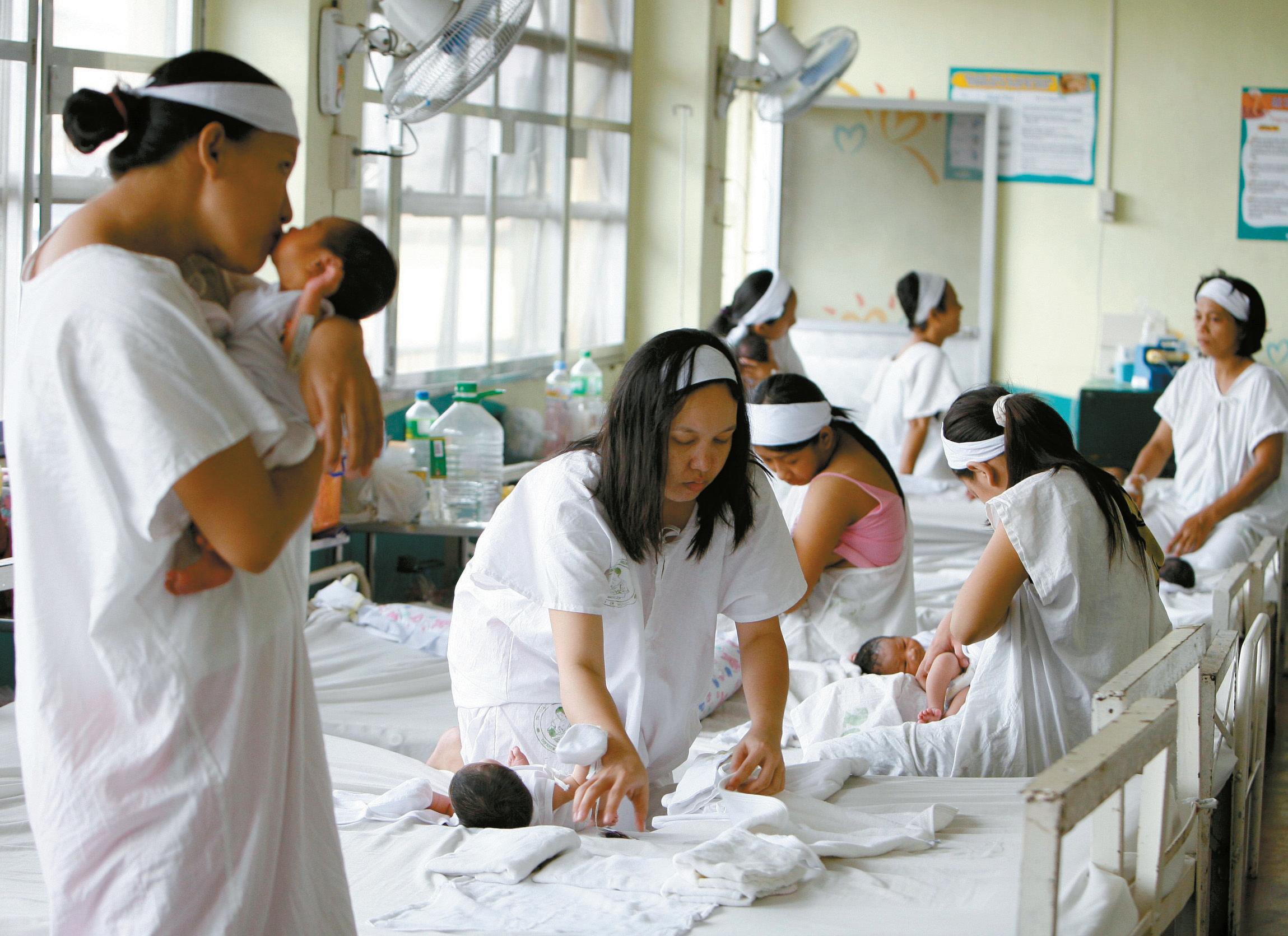
a betrayal of women, a betrayal of the innocent unborn child that would ease the way to the destruction of 20,000 unborn children annually (in Victoria),” he told Melbourne’s Herald-
Sun newspaper. As a result of Archbishop Hart’s call for prayer prior to the vote, Archbishop Wilson immediately wrote to all Australian bishops and asked that all dioceses follow the pat-
tern, “as we need to make a national response in prayer”. Archbishop Wilson said he did not make a public statement on the issue as Archbishop Hart and his team had dealt with
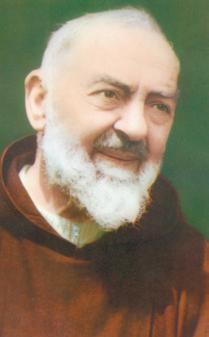

the arguments well and that “he speaks for all of us (bishops)”, as the bishops all back the Melbourne prelate. When asked whether the Victorian Law
Continued on page 6




THE providential nature of the genesis of the St Pio Prayer Group in Perth could lead one to believe the man himself had a hand in it.
Anywhere up to 300 faithful gather at a different church around Perth once a month to bring their sufferings to the one who suffered so much himself in his time, both from the Stigmata – the five wounds of Christ – and the ridicule that came with it.
The group’s genesis goes back two years, when Des, his wife and a group of parishioners went on a pilgrimage with Bassendean priest Fr Jim Shelton to New Norcia on September 23, 2006 – that just happened to be Padre Pio’s feast day.
21
22
Mary Bertilla Boscardin
1888-1922
feast – October 20
At 16, Anna Francesca Boscardin begged the Sisters of St. Dorothy at Vicenza, Italy, to let her join, saying “I



29th Sunday in Ordinary Time
Today’s theme is
After advertising it in The Record, they filled four buses, and a tradition had started. The next month the Scullys went on a trip to Rome for the 50th anniversary of the House for the Relief of Suffering that Padre Pio himself started up in San Giovanni Rotondo.
While there they picked up an application form from the Padre Pio Prayer Group headquarters in San Giovanni Rotondo, and the inaugural Mass was concelebrated by Archbishop Barry Hickey with his Vicar General Fr Brian O’Loughlin, Fr Paul Fox and Fr Tiziano Bogoni, who was instrumental in the group’s formation.
The Mass was celebrated by Archbishop Barry Hickey at St Mary’s Church, Leederville on May 25, 2007 –120 years to the day of Padre Pio of Pietrelcina’s birthday. Up to 400 people attended.
The annual pilgrimage that year went to Toodyay, with support from the Franciscan Friars of the Immaculate, and the Prayer Group has been meeting monthly since February, starting with Leederville and held since at Morley, City Beach, Allendale Square and Marangaroo parishes.
The day starts with an educational DVD on the life and teachings of St Pio, then exposition of the Blessed Sacrament, Rosary, Divine Mercy, silent adoration and Benediction. Then Mass is celebrated with a specially designed liturgy, confessions and lunch afterwards.
On August 23 this year, Archbishop Hickey addressed the prayer group at Morley’s Infant Jesus Church on just what it is about St Pio that draws people to Christ.
He said that despite dying long ago, St Pio is still loved not just for his many miracles, but because he understood the struggles of ordinary people; he had a great love for Jesus, and with his own stigmata he was close to Christ and His suffering.
St Pio also knows that daily life is not easy for anybody.
“He suffered rejection from those who should have loved and cared for him. We ask St Pio not for our own needs but to help us know our saviour better through

24 F St Anthony Claret, bishop (O)
Gr Eph 4:1-6 Lead a worthy life
Ps 23:1-6 To seek God’s face Lk 12:54-59 Judge rightly
25 S
Gr Eph 4:7-16 Live by the truth
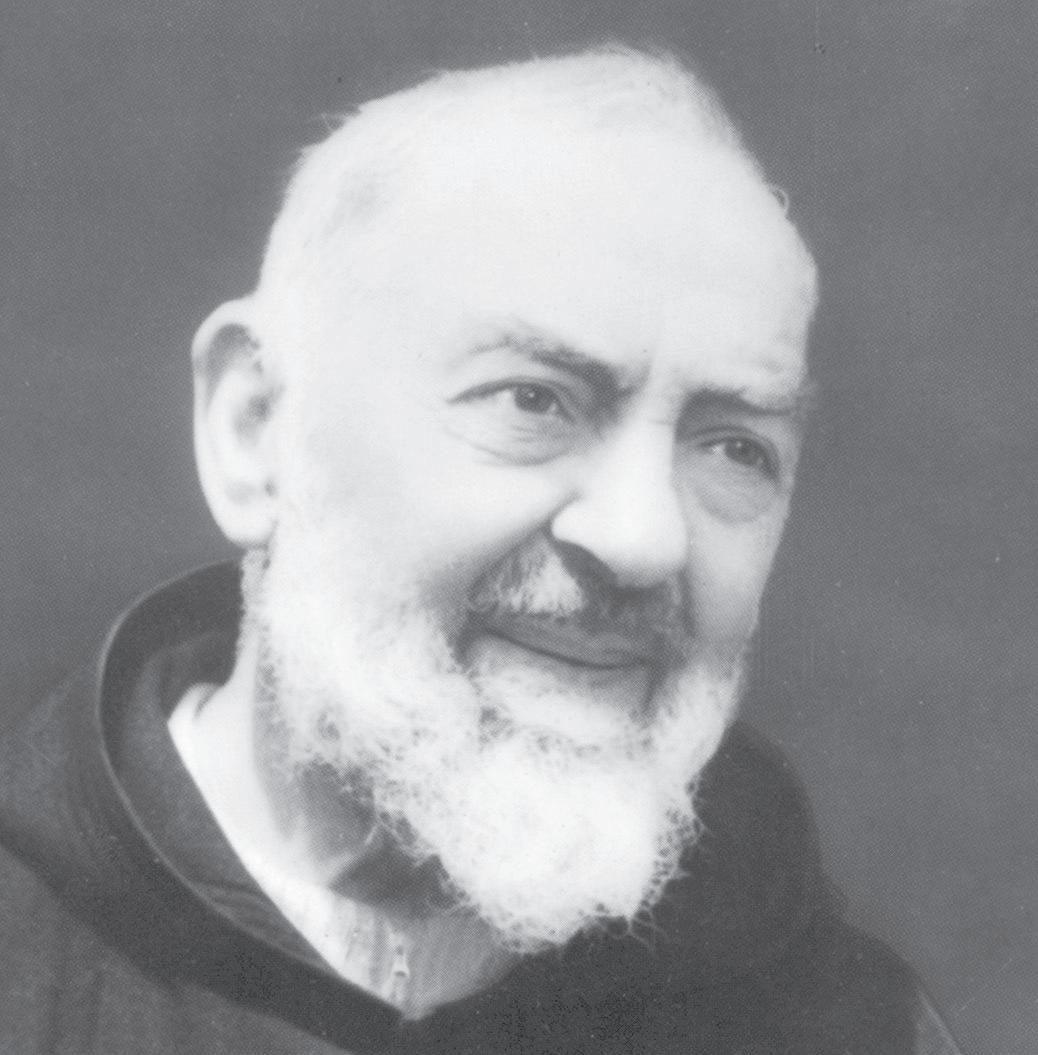
our own suffering, so it has a meaning that is purifying, and brings us closer to Jesus,” he said.
Those whose lives have been transformed by offering up their sufferings in prayer to St Pio have had providential encounters.
One woman from Italy’s south who now lives in Perth, Pina Gulluni, met Des last year when coming to hear visiting friar Elia from Italy, who it is claimed suffers the stigmata also.
Subsequent visits to Allendale Square for adoration brought her into contact with Fr Bogoni and it was there that she noticed a picture of St Pio.
“I’ve been captured by this man that I never met, and it stayed with me forever. It sounds weird, but I can feel him close to me in times of struggle,” Pina says.
But devotion to St Pio is not about his ‘abilities’, for, as Pina says, it is Christ doing the healing. Archbishop Hickey says the group provides an incentive to pray and “people get a lot out of coming together and praying together in the monthly Mass”.
“They see something in Padre Pio that relates to their own lives, particularly in their own suffering, and they find it a great help,” he said.

The funeral Mass for New Norcia Abbot Placid Spearitt OSB - who died suddenly on October 4 at Ampleforth Abbey, the monastery of his profession
be celebrated at St Joseph’s Church, Subiaco at 10am on October 21 and his burial will take place at New Norica at 5pm that afternoon.
A vigil Mass will be celebrated for Abbot Placid Spearitt at New Norcia on October 20 at 6.30pm.
Four years prior to being appointed Abbot of the New Norcia Benedictine community - a position he held for 25 years - Placid was asked to be the Prior Administrator of Ampleforth Abbey, in 1979.
Fr John Herbert OSB said that Abbot Placid’s 25 years of humble prayer, work and service have guided New Norcia into a new era.
The “spiritual home” of the Sisters of Mercy in Perth, MercyCare’s present Wembley campus, has been marked with a heritage trail commemorating the site’s rich history and development.
The trail was launched on September 15 when nearly 70 guests gathered to walk the trail and listen to its history as Fr John hart SJ, a former aged care chaplain at the site, blessed each of the trail’s nine stations.
The stations mark the various residents and functions of the site over the past 160 years; as the original settlement of the Spanish Benedictines Serra and Salvado and as an orphanage for boys and a Mercy run home for girls, not to mention the place where this very paper was first printed.
A revamped version of an earlier trail, the project has been a labour of love for avid historians Rev Lyn Pushong and Mrs Jeanine hendricks, two volunteers whose travail makes the site’s history an ever-present reality.
Although a heritage trail had been created in 2001 for the centenary of the Mercy’s presence on the site, it fell into disrepair when work on new aged care facilities began and several MercyCare services relocated to their present Doubleview site.
Ms Pushong and Ms hendricks were given an assurance by MercyCare’s Group C eO, Jeff Simper, that once redevelopments on the site were completed, a trail with permanent signs would be erected.
The two who make up MercyCare’s heritage Information Services Team came to work together when a range of historical photographs were donated to MercyCare in 2003.
It was then that archivist, Ms Pushong, a Deacon in the Anglican Church and former supervisor at MercyCare’s Family Services, gratefully accepted the help of Ms hendricks, a retired librarian.
Ms hendricks and her family have a long association with the Sisters of Mercy. Back in the days when nuns didn’t drive, she remembers her father, as a volunteer, driving Mercy nuns around Perth.
having also been educated by Mercy nuns, she says that her own 15 years of voluntary service have been very enjoyable ones.
The launch of the heritage trail included the publishing and dis-
in brief...
tribution of a revised and extended trail guide compiled by Ms Pushong as well as a display tracking the history of the site that gave aged residents and staff historical insight into their own surrounds.
The heritage trail guide details the site’s development back to the very first years of mission in Western Australia.
The site was purchased by the first Bishop of Perth, John Brady, having arrived in 1846 with a missionary party including the Mercy Prioress, Ursula Frayne, six Irish Mercy nuns and the Spanish Benedictine monks Serra and Salvado.
The two Benedictines were the first to occupy the site, developing it into their “New Subiaco”.
They cultivated the land and built a monastery that was later to become St Vincent’s Orphanage for Boys under the care of the St Vincent de Paul Society when the Benedictines relocated to their other site at New Norcia.
It was in this Orphanage that the first Record was printed in 1874. It became an orphanage for girls under the care of the Sisters of Mercy when the boys were moved to Clontarf in 1901.
Under the leadership of Ursula Frayne, girls were moved from the Mercy’s Victoria Square site to Wembley.
Stations 2 – 7 mark buildings that were either established or used during this period to 1971 where Mercy nuns educated and cared for children as well as unmarried mothers and their babies.
With the deinstitutionalisation of care that occurred under the leadership of Sr M Martin Kelly from 1971 - when orphaned siblings were for the first time kept together and lived in residential cottages - the orphanage was demolished in 1979.
In a sign of continuity, the heritage trail launch was attended by the CeO of the Benedictine Community of New Norcia, Ms Carmel Ross and the Chairperson of the MercyCare Board, Dr Maria harries amongst other members of MercyCare’s executive and frontline staff.
In the preface to the heritage trail guide, Group CeO Jeff Simper invites the people of Perth to get involved in the present and future mission of the site.
“I sincerely hope you enjoy walking through our past and that you will consider accompanying us on the next stage of our MercyCare journey.”
More information about MercyCare can be found at www.mercycare.com.au
Seton Catholic College will launch its eighteenth annual Brother Francis Visual and Practical Arts exhibition later on this month. The exhibition will display the talents of years 8 – 12 students in religious art, photography, painting, ceramics, print making and digital media amongst others.
The official launch and awards ceremony will take place on Friday October 24 starting at 7pm while public viewing of the works will be available on October 27-28 between 8:30am and 3:45pm. The launch of the exhibition will be catered for and served by the college’s food and nutrition students as well as students with learning challenges from Seton’s educational Support Unit.
The event is named after Brother Francis Murphy of the Society of African Missions, an order which ran St Brendan’s, a boys school that merged with De Vialar College for girls to become Seton Catholic College in 1990. Brother Francis is held in fond memory at the college, having taught at both schools; a link between Seton’s tradition and its future.
Enquiries regarding the exhibition can be made by phoning 9314 1816.
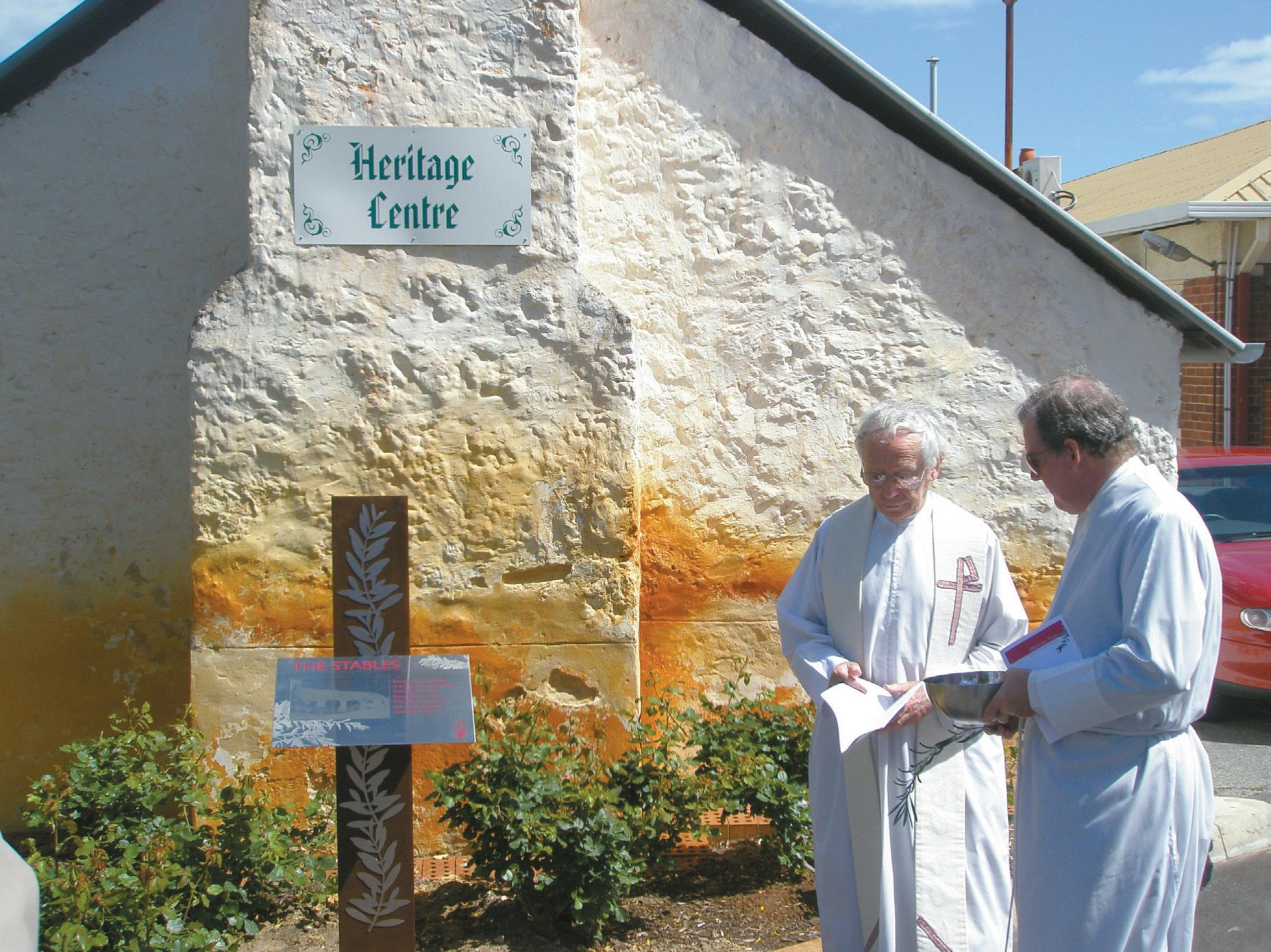



THE man responsible for the Marian Movement of Priests (MMP) in Australia will be touring through regional WA asking people to come and pray with him.
Fr Thomas Merlino OFM CAP, a Capuchin Prior based in Queensland, will be visiting churches in Geraldton, Dongara, Albany and Pemberton between October 20–28. He will be praying the “cenacle”, a form of prayer based on the Rosary that is unique to the MMP.
Each cenacle is prayed for priestly vocations and the well-being of priests and is accompanied by a reading from the private locutions of the movement’s founder, Fr Stefano Gobbi, who began the MMP in 1973.
The WA visit of Fr Merlino has been organised by Anne Blackburne-Kane who has been part of cenacle groups since 1990. She says that Fr Merlino’s visit is an excellent opportunity for Catholics in regional WA to get together and ask Our Lady to pray for priests.
For more information about the visit, see the Panorama section on page 14 of this week’s edition of The Record
AN associate professor and his wife are coming to the University of Notre Dame from their sister university in the United States to let couples know what healthy relationships are all about.

Kevin and Kathy Misiewicz will run two workshops at Notre Dame’s Fremantle campus – ‘Investing in our relationship – We are worth it’ and ‘The spirituality of our relationship – Journey not destination’.
The workshops aim to answer pertinent questions that couples might have: “What is the best about you, me and us?”
“Where to from today?” “Where are we going in terms of what God offers us?”
Kevin Misiewicz is an associate professor in accountancy at the University of Notre Dame, Indiana, but his qualifications for cofacilitating the workshops with his wife come from over 30 years of experience in the Marriage Encounter movement.
The movement aims to help couples to revitalise their marriages through weekend retreats with other couples.
For more information about the workshops, contact Notre Dame’s Chaplaincy on 9433 0551. More information about Marriage Encounter can be found at www.wwme.org.au.
Ngalangangpum is a Catholic school at the Warmun Aboriginal Community where the school is centred on the Mother and Child –symbol of the Two-Way process. The school is located halfway between Halls Creek and Kununurra in the remote East Kimberley region of Western Australia, with a fluctuating population of approximately 400 people. The majority of its residents are members of the Kija language group. Current student enrolment is 129.
Ngalangangpum was established in 1979 in answer to a direct request from the Warmun Community. The community decided upon a TwoWay school based on the Catholic beliefs. A Community Advisory Group assists the Principal to develop and be responsible for school policy. The school started as a primary school and was extended with secondary classes in 1990.
The term Two-Way learning has in subsequent years been identified as the philosophy of education out of which all Catholic schools in the Kimberley operate. Traditional aspects of education are recognised and given status equal to that of other curriculum subjects. In this way students can learn to value both traditions. The aim is to equip students with a type of education that can help them to cope with the pressures of modern living, without losing their cultural identity. The school encourages the involvement of community members in the teaching of traditional culture and beliefs. Elders are invited to attend the school to teach the children traditional painting and dancing, to tell them stories and to take them out on bush trips. Please visit www. ngalawarmun.wa.edu.au for more information.
The successful applicant will be required to take up this position on 1 January 2009. There is an opportunity for this position to be offered as a secondment.
Applicants need to be practising Catholics and experienced educators committed to the objectives and ethos of Catholic education. They will have the requisite theological, educational, pastoral and administrative competencies, together with an appropriate four-year minimum tertiary qualification, and will have completed Accreditation for Leadership of the Religious Education Area or its equivalent. A current WACOT registration number must also be included.
The official application form, referee assessment forms and instructions can be accessed on the Catholic Education Office website www.ceo.wa.edu.au. Enquiries regarding the position should be directed to Helen Brennan, Consultant, Workforce Relations & Development Team on (08) 6380 5237 or email wrd@ceo.wa.edu.au. All applications, on the official form, should reach The Director, Catholic Education, Catholic Education Office of Western Australia, PO Box 198, Leederville 6903 no later than 30 October 2008.
By
Robert HiiniPREGNANCY Assistance in East Perth has not been able to provide emergency housing to women with an unexpected pregnancy since April this year because of a lack of suitable live-in carers.
“Miriam’s House”, in another location, has been used by Pregnancy Assistance since 1998 to house up to three women at any one time as well as two livein careres. It has been an integral part of their mission in offering care and practical help to women facing unexpected and crisis pregnancies.
Nuns from the New Apostolate Consecrated to the Heart of the Holy Family provided care at the house for five years but have withdrawn to consolidate their community.
Pregnancy Assistance put out the word for help, seeking the assistance from other religious orders of women as far afield as the United States and the Philippines.
Two Religious from the Oblate Sisters of the Most Holy Redeemer stayed in the house for two months earlier this year but were called back to the Philippines by their mother superior in April.
Lydia Fernandez, Pregnancy Assistance’s Director, says that they are still hopeful they will be able to enlist the help of a female religious order because of the dedicated care

Paramount service: Pregnancy Assistance Perth’s website. The Catholic agency has not been able to provie emergency housing to women with unexpected pregnancies, a key part of its service. Assistance is desperately needed.
they are able to provide. She says that their board is examining other possibilities if Religious help cannot be found.
The house was staffed by lay people prior to 2003 and this remains an option today.
The agency is funded entirely by tax deductible donations and relies on volunteers to stay open.
Earlier this year, Pregnancy Assistance introduced a subscription rate of $25 for its quarterly
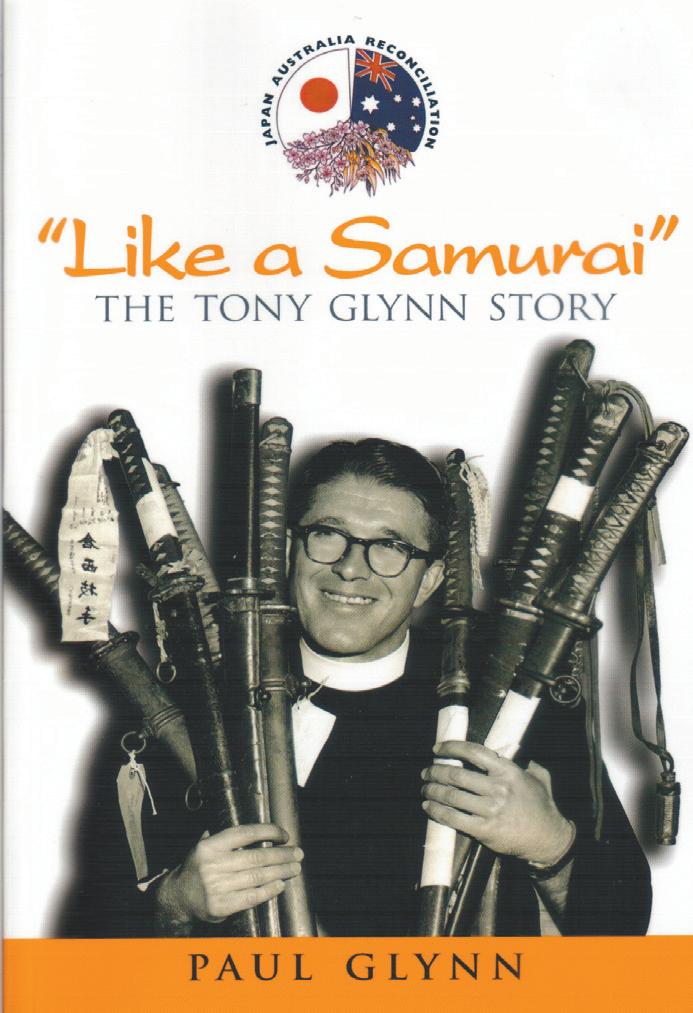


publication Abundant Life to raise funds for the agency’s ongoing mission.
In the June and September editions, readers were asked to consider subscribing and advised that future editions would be subscriber only.
More information about Pregnancy Assistance and Abundant Life can be found at www.pregnancyassistance.org.au or by contacting 9328 2929.

PRoFESSioNal development has been all the rage in the corporate world for the past 25 years, but priests can also benefit from experts in areas such as pastoral care of the sick and dying.
Priests gathered on october 8–9 at the Vietnamese catholic community centre in Westminister for a seminar on pastoral care and the cultural challenges it represents, both to priests and the people they are ministering to.
The seminar included workshops on death and mortality, self-care, women’s issues, the practicality of funerals and speaking the Word of God, delivered by practising specialists.
The seminar was organised by Fr John Ryan, the Episcopal Vicar for Health who has worked in the field as a hospital chaplain and a parish priest for over 30 years.
archbishop Barry Hickey asked any priest ordained 10 years or less from both australian and overseas backgrounds to attend the seminar. it was attended by both parish and assistant priests as well as several hospital chaplains.
Fr Ryan says that the underlying driver of the seminar was the central place that pastoral care to the sick and dying must have in the mission of a priest.
“it’s about being sensitive to people’s needs; being quick to respond to a call for help from a parishioner,” Fr Ryan says.
in practical terms, this represents a challenge that would be daunting for any person; “to bring the compassion of christ indicating that he cares, that he is trying to understand, to be supportive of people, to offer the sacraments if it is appropriate, sometimes just to be a presence.”
Fr Ryan says that “in an age when we all have to be entertained and laughing all the time”, a lot of people are not prepared for death when it comes to a beloved family


member or friend. This makes the job of a priest that much more difficult.
Rosemary Keenan, a nurse, counsellor and lecturer at curtin University’s School of Nursing gave a workshop focusing on the experience of women and how a priest can best care for women and couples.
“Women do experience grief in a different way especially around child bearing,” Ms Keenan said. She explained that it is important to be attuned to gender in the different way that women experience reality and gave the priests tips on how they could show the greatest degree of sensitivity.
She says that while a lot of pastoral care comes down to on-the-job training, priests facing difficult pastoral situations involving women and childbirth can speak to King Edward or St John of God Hospitals, their brother priests or a trusted counselor. The seminar also broached the sensitive issue of a priest’s accent and the difficulties that priests and parishioners might have in communicat-
WHEN Robert Browning wrote his poem
The Pied Piper of Hamelin, the Pied Piper - by means of a secret charm - could draw out all creatures under the sun. How things have changed. in 2008 the Pied Piper has attracted tantalising intense fancy pink diamonds and black Tahitian Pearls.
These pieces modelled in the photo by angela Hirs can be purchased at the Trinity old Boys art Exhibition to be held at Trinity college in East Perth from october 17-19.
The Pied Piper sculpture is the brainchild of Wesley college resident artist Robin

ing with one another. Fr Ryan announced that speech therapy would be made available to any priest who requested it but also said that parishioners ought to give their priests constructive feedback and affirmation regarding their speech.
Fr Pavel Herda, who was ordained in June this year, and Fr Gavin Gomez, parish priest of St Bernadette’s, Port Kennedy said that they found the seminar to be a positive experience.
Both men are engaged in the care of the sick and dying as well as ministering to their families.
Fr Herda says that this is often difficult, particularly in tragic circumstances: “Sometimes people want immediate answers...you just find yourself helpless but you can help them and listen to them and you can learn from them.”
Father Gomez agrees: “Just being present there sometimes, is the best thing you can do.”
Yakinthou, who studied art in london and his work is in private and public collections around australia. “What fascinates me is that the more mundane an item is, the more it jumps out at you when removed and placed in an unfamiliar context,” he said. Wa artist Kelly cocks has agreed to be the feature artist of the Exhibition for Trinity old Boys’ association. Kelly’s artworks have a “special energy”: some feature curvaceous women created in bold impasto acrylics and her portfolio includes abstract pieces containing crystals and other textural elements. The Exhibition will also showcase a wide variety of exquisite paintings, jewellery, sculptures, photographs, pottery and handmade glassware.
Tickets for the Opening Cocktail Party may be purchased by contacting Diane Millar on 9223 8132 or millar.diane@trinity.wa.edu.au.
Social Justice students from Notre Dame’s Fremantle campus are sleeping out on the streets as part of a wider plan to encourage research, discussion and action to address the serious poverty issue in Western australia.
UNDa’s Dean of Medicine will also do a presentation on The Economics of Homelessness to highlight the issues associated with being homeless in australia.
The activities are being held from october 13-17 as part of antiPoverty Week, a national initiative established in australia as an expansion of the United Nations’ annual international anti-Poverty Day on october 17.
The National Facilitating Group of anti-Poverty Week aims to strengthen the public’s understanding of the causes and consequences of poverty and hardship around the world and in australia. The group also hopes to encourage research, discussion and action to address these problems, including action by individuals, communities, organisations and governments.
UNDa Fremantle campus minister Tom Gannon says the university’ social justice group is committed to profiling the issue of homelessness, and last semester students from the living Human Rights unit held a function highlighting human rights and the dignity of the human person.
after the function, several of the students were walking along High street in Fremantle and practically tripped over a homeless man on the sidewalk who was distressed and only partially conscious. The students were amazed that people just walked past him and did little to render assistance.
“This incident provided the motivation for them to raise the awareness of the University community that the people who ‘sleep rough’ every night on the streets are not nameless people who should be stepped around and ignored. They have faces and stories and they are important,” Mr Gannon said.
“They hope that by seeing classmates ‘sleeping rough’ in one of the University’s courtyards they will think about the issues and the people who find themselves in this situation.”
Students have asked the Red cross and St Pat’s c ommunity Support centre in Fremantle, who work with homeless and under resourced populations, to come and promote their work.
The peak body representing Catholic hospitals will fight for the conscience rights of physicians after the Abortion Law Reform Bill passed through Victoria’s Upper house on October 10.
Catholic health Australia, whose Victorian hospitals account for a third of births in the State, asked Victoria’s Parliament to give Catholic hospitals an exemption from Clause 8 that requires physicians to refer a patient seeking an abortion onto another who has no conscientious objection.
Martin Laverty, chief executive of ChA, which operates 75 hospitals and 550 aged care providers around Australia including St John of God hospitals and Mercy Care in WA, said that as Victoria’s Legislative Council ignored this request – though some MPs agreed - ChA is currently reviewing its operations under legal advice so Catholic hospitals can still operate under Catholic principles.
“We will not walk away from our Catholic convictions, and we will seek to challenge this law if that need becomes apparent. We support and will defend the right of each and every health practitioner working in each of our hospitals to provide healthcare in fulfilment of the code of Catholic ethical standards,” he said.
“We hope it doesn’t come to that,” he told it last week, “but Catholic hospitals that have operated for over 175 years harmoniously and without incident should be able to operate within their own environments respecting the foundational principles.” he said the Bill’s approval marks the end of centuries of religious tolerance, without a case to do so, despite the fact that Catholic hospitals provide 9500 hospital beds around Australia and 15 per cent of the nation’s healthcare services.
“This sends a signal to all groups that you’re no longer entitled to individual’s thoughts and principles on which you’ve been founded,” he said.
Mr Laverty said the law is vague and unworkable, echoing the comments during the debate of Fr Frank Brennan SJ, professor of law in the Institute of Legal Studies at the Australian Catholic University and professor of human rights and social justice at the University of Notre Dame Australia.
Fr Brennan said on the Jesuits’ website eurekastreet.comau that Clause 8 is completely unworkable, “unless of course each medical practitioner is to be armed with a comprehensive listing of the views of all other practitioners as to what circumstances and when they would in good conscience contemplate performing an abortion”.
The ChA warned that the Abortion Law Reform Bill violates the Charter of human Rights and Responsibilities Act 2006 in forcing medical professionals to act against their conscience.
Speaking from Rome, where he was appointed by Benedict XVI as a president in the Synod of Bishops on the Bible, Sydney Cardinal George Pell called the Bill’s refusal

to grant conscience rights of physicians “tyranny”. In a message relayed through his Auxiliary Bishop Julian Porteous on October 9, Cardinal Pell said that the government should offer women in crisis pregnancies “more than simply an increasing number of ever more accessible ways in which their unborn children can be killed.”
“The rights of freedom of thought, conscience, religion and belief are fundamental. The ability to exercise conscientious objection is a keystone of democracy. All of us should have the right to hold a belief and not be compelled by the state to act contrary to that conviction,” he said.
“It is the difference between the free society and the one subject to tyranny. That conscientious objection is a fundamental human right is expressly recognised in similar legislation in various jurisdictions both overseas, as in the UK and New Zealand, and also domestically.”
Young Victorians For Life, a network of youth spread on the social networking site facebook, has also vowed to continue the fight for the culture of life.
Calling October 10 “the blackest day in the history of Victoria”, a statement on the group’s facebook page said: “We mourn for the babies, for their mothers and fathers and for a Victoria now fully immersed into a culture of death.
“The passing of this Bill, however, will not change our strong passion to stand up for life. Standing together with all prolife organisations around Australia, Young Victorians for Life are committed to bringing Victoria back to a culture of life.”
Abortion remains in the Criminal Code in New South Wales and in Queensland, and some restrictions remain in South Australia.
In what was considered the most liberal abortion laws in Australia, 1998 legislation ensured it is legal in WA up to 20 weeks of pregnancy if one of four grounds is satisfied, but the first of these essentially allows abortion ‘on request’.
Anna Krohn: Choice muddied - Vista 4

contiued from page 1
Reform Bill is a threat to Catholic healthcare as we know it, Archbishop Wilson said. “More than that”, he warned that other laws based on individual rights would harm the Catholic Church’s right and ability to serve people based on the Truth that it professes.
“It’s also a concern in terms of way that the country would operate in general, in taking away the opportunity for people to exercise their conscience.
“So it would not only be impossible for us to be involved in obstetric and maternity care, but other laws will prevent us from being involved in things like welfare and adoption programs.”
Archbishop Wilson said that upon the Bill’s passage through Victoria’s parliament, the Australian bishops would “consider the issue carefully in light of legal realities that the new law creates”.
“This strikes a blow in area of making abortion access almost unrestricted, and
to the lives of all those who are going to be killed as a result. So as a law it’s really bad and has very bad consequences for a society in general that would give approval to this sort of behaviour. That’s the real evil,” he said. “If that’s accompanied by restrictions on the right of people to live their life according to their conscience, it’s another great worry about the way our society is developing.”
The day before the Bill passed, Archbishop hart told The Record that the legislation leaves the Catholic Church with few choices.
“We’ve said we can’t perform abortions nor refer abortions elsewhere; we have nowhere to go. Our parliamentarians seem to very easily be able to make the separation between their own personal views, their own faith and the reality that abortion is harmful as it deals with not just one person but a beautiful helpless baby in the womb.”

Catholic agencies aiding women with crisis pregnancies spreading
n By Anthony BarichMel B ou RN e a rchbishop Denis hart has opened a Pregnancy assistance (Pa) centre in Frankston after extensive consultation with organisers of the Perth agency of the same name.
on october 7, the day debate began in Victoria’s upper house for the abortion Reform Bill that has now legalised abortion up to 24 weeks and will force doctors to refer patients to other doctors if they have a conscientious objection, archbishop hart opened Pregnancy assistance in Frankston. “i went there to open it as i’m deeply conscious that where ever there is an unplanned pregnancy, people are very much on their own and they are in need of good advice, compassion and someone to walk with them and remind them that abortion isn’t the only solution, as it brings sadness and anxiety,” archbishop hart told the Record.
“ this centre will remind people of the options and help them to work through the pregnancy with love.”
he said it started with “very energetic and capable” mothers and grandmothers who have been wanting to establish a pregnan-
CatholiC healthcare has refuted reports that it recruited former NSW State Premier Morris iemma onto its board.
Chris Rigby, managing director of Catholic healthcare, a not-forprofit provider of aged, community and healthcare services in NSW and south-east Queensland, told The Record that Mr iemma has not been offered a role on its board.
“Many people know him in NSW and we have some contacts with the NSW government, but we haven’t offered him a position. the story is completely false,” Mr Rigby said.
“We’ve been happy to let the story just die out. thankfully it didn’t grow legs.”
The Australian and Sydney’s Daily Telegraph newspaper ran a story on october 1 reporting that Mr iemma will join Catholic healthcare’s board, “breaking the tradition of former premiers who go on to earn millions as corporate high-flyers”.
the newspapers reported that the position that would include an advisory role would pay $39,000 a year.
they also reported that Catholic healthcare approached Mr iemma about the position three weeks ago after he resigned as Premier.
Mr iemma voted for NSW’s therapeutic cloning Bill, saying publicly that Cardinal George Pell’s comments warning Catholic politicians that voting for it would compromise their life in the Catholic Church, saying it would not stop him from doing what was right.
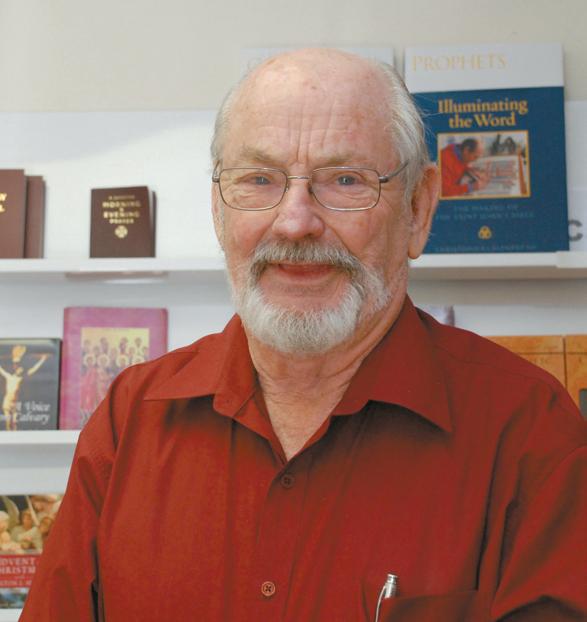
Day in Sydney in July, lydia Fernandez – who manages Perth’s Pa which runs on fundraised money - briefed the Frankston group further, and by october 7 it opened, using Perth’s constitution and mode of operation.
archbishop hart praised the “very successful” work that Pa has done, and at the opening, he said the centre will “fill a critical gap on the Mornington Peninsula and beyond, especially for young and needy people who’ve been seeking information and resources about the various challenges of pregnancy.”
he said Frankston Pa will also provide free pregnancy tests along with financial, family and relationship support.
cy help centre in a shop front in Frankston for a number of years. the Committee of Management is headed by president elizabeth Ransom and vice president Denise Den Bakker, who have received Pa’s monthly magazine abundant life for years and consulted extensively with Miriam Peachey and her husband Brian, who has chaired Pa since its inception in September 1996.
after years of discussing the possibility of opening up such a centre, Mr Peachey addressed a group of 14 women and two men, including the Frankston parish priest, on February 4 detailing Pa’s history, how it was started and operated and its effectiveness, and fielded many questions.
after attending World Youth
a quirk of iVF regulation in South australia has led to groups of lesbians being impregnated by the same man. the former chairman of the South australia Council on Reproductive technology, andrew Dutney, says that he is aware of 30 lesbians in adelaide who had children by the same “very generous” sperm donor ten years ago. the women used to organise picnics together for their families.
“at a time when our State parliamentarians are debating changes to our abortion laws, communities will welcome the establishment of centres such as these which very much identify with the anxiety of single mothers, mums with several young children and those who’ve also been abandoned by partner or families,” he said.
“one may be forgiven for suggesting that to live in the womb or old age should be considered endangered areas. unplanned pregnancies don’t have to be regarded as crises to trigger alarm or despair. environments like this will provide emotional support, assistance and advice without pressure. Women and girls in such distress, and their partners, will be particularly welcomed here.”
in another case, 29 women had children by the same donor. Since adelaide is a city of less than a million, Dr Dutney fears that there is a risk of unwitting incest amongst these children.
Dr Dutney blames excessive regulation for the situation.
in South australia, unlike other states, lesbians cannot access fertility treatment. hence they seek out other methods of becoming pregnant, from turkey basters to casual sex.
Furthermore, iVF clinics do not encourage anonymous donation, which deters men from donating in a formal system.
-Adel A ide Advertiser, Oct 9


Not R e Dame’s Fremantle School of Nursing has been one of the successful tertiary institutions to be awarded new Commonwealth-supported higher education places in the national priority area of nursing.
the announcement was made in a September 29 media statement by Prime Minister, Kevin Rudd, Minister for education and Deputy Prime Minister Julia Gillard and Minister for health Nicola Roxon.
“ the new places will give more students the opportunity to qualify as registered nurses and will increase the number of nurses available to work in our hospitals,” the alP statement said. “ that will benefit patients in the health system significantly and, ultimately, the community.” the extra places are part of the australian Government’s 200809 Budget health and hospitals Reform – health Workforce initiatives.
u NDa Vice Chancellor, Professor Celia hammond, said the focus from the federal government reflected uNDa’s focus
on quality education for Wa nurses.
“Notre Dame has built a reputation for providing quality clinical education to our undergraduate students.”
She said that the three-year course includes a minimum of 1240 hours across three years of clinical practice in areas ranging from aged care to critical care. “ this program is comprehensive with its aim to expose students to a wide variety of clinical experiences that we have been able to offer due to our strong relationship with our health care partners, both in the private and public sectors,” she said. an important aspect of this clinical education, which is novel to Western australia and to most other parts of the country, is the use of mentors who provide oneon-one clinical supervision for our students.”
“ the excellent education and experience our students receive, coupled with the broad educational foundation offered at Notre Dame has seen our graduate nurses being in high demand with employers.
We are grateful to the Federal Government for these additional places and look forward to the opportunities they provide for future Notre Dame students.”
LavaL Legal general counsel
Martin Bennett wants The West Australian editor Paul armstrong to come to the table as soon as possible to resolve his complaint against the newspaper on behalf of archbishop Barry Hickey.
Mr Bennett commenced defamation proceedings against The West Australian on Friday 10 October 2008 on behalf of the archbishop after the newspaper ran a story on October 10 saying it would not publish an apology for labeling the archbishop a ‘hypo-
crite’ in a page three article on October 2. Mr Bennett told The Record his objective now “is to attain as soon as possible from the Supreme Court an order requiring The West Australian to attend a court-supervised mediation”.
“Our objective is to resolve our complaint.”
The October 2 article was headlined “archbishop Hickey a ‘hypocrite’”, and included quotes from University of Wa philosophy professor Michael Levine as saying there is “hypocrisy” in the archbishop calling for women’s rights to be acknowledged in a tv
advertisement run that week when the Church “demeans” women by denying them ordination to the priesthood.
In response to this, Mr Bennett wrote a private and confidential letter to The West Australian editor asking for the publication of an apology to the archbishop.
“The point of what I was complaining about was that whilst the archbishop welcomes and supports robust and healthy debate on matters affecting the Church, this article crossed the line and in fact The West, instead of just reporting debate on the ordination of

Benedict XVI tells Alexy II the times urge haste
n By
Inmaculada ÁlvarezvaTICaN CITY, OCT. 6, 2008 (Zenit.org).- Benedict XvI sent a personal message to Russian Orthodox Patriarch alexy II saying that modern times call for a hastening of the journey toward Christian unity.
The September 22 message was hand-delivered to alexy II by the archbishop of Naples, Cardinal Crescenzio Sepe, on an official visit to Moscow at the invitation of the patriarch. The cardinal gave the message to the patriarch in a meeting that lasted a little more than an hour last Thursday.
“I have a deep affection for all the Orthodox brethren, and I am particularly close to them in these most recent days when conflict has caused significant suffering to peoples so dear to me,” the Holy Father said. “I never cease to offer daily prayers for peace, asking the Lord that the appeals of Your Holiness to resolve all hostility for the good of the nations may
be heeded.” He added: “Faith in Our Lord Jesus Christ is a bond that unites hearts in a profound way and invites us all to strengthen our commitment to manifest to the world a shared witness of living together respectfully and peacefully.
“Our times, marked so often by conflict and grief, make it even more necessary to hasten the journey toward the full unity of all the disciples of Christ, so that the joyous message of salvation may be spread to all humanity.”
Cardinal Sepe told vatican Radio on the day of his meeting with alexy II that the Orthodox and Catholic Churches are growing ever closer, “as the patriarch himself emphasised with emotion.”
“The impression is that a very important step has been taken to create a climate of closeness and mutual respect, of fraternity and friendship,” he added.
Bishop vincenzo Paglia of Terni, president of the Italian bishops’ ecumenism commission, who was also present in the meeting with alexy II, said that the process of growing closer should proceed with meetings between the various pastors of both Churches.
women, also ran a personal attack on the archbishop” Mr Bennett told The Record. “What the West said wasn’t opinion or comment.”
In his advertisement, archbishop Hickey said women should be treated with respect, saying “they civilise the human heart in ways men cannot do”.
“I ask everyone to make sure women are never demeaned – not by actions, not by distasteful images and not by the denial of rights,” he said.
Mr armstrong responded to Mr Bennett’s private letter defending the newspaper publicly in the
October 10 article, saying that the newspaper provided a forum for debate on the matter.
He said the newspaper’s role requires that “those with grounds for an opinion on the subject (of the role of women in churches, especially the Catholic Church) be given an opportunity by the newspaper to convey their views about the Catholic Church’s ban on women becoming priests and the Church’s view of women in general, just as it requires that archbishop Hickey be given the opportunity to share his thoughts on the subject.”
vaTIC a N CITY (CNS)Despite the many difficulties associated with evangelizing and catechizing young people, today’s youths are still thirsty for spiritual sustenance, said the head of an ecumenical community.
Brother alois Leser, prior of the ecumenical monastic community of Taize, France, told participants at the world Synod of Bishops on the Bible that the community has several concrete suggestions for helping young people rediscover God and his word.
“It is essential to welcome (young people) in an atmosphere of trust that will enable them to discover God already lives in them,” even for those who start out having very little faith, he said in his October 11 address. He said the community’s founder, Brother Roger Schutz, sought to make the way the Liturgy of the Hours is celebrated in the monastic community more accessible to young people by simplifying the service and aiding prayer in a way that helps lead people to experience “a personal encounter with God.”
Brother alois said the goal is to help young people become involved in their local parish after having a “timely experience” at their community. He gave the following suggestions that local churches could implement:
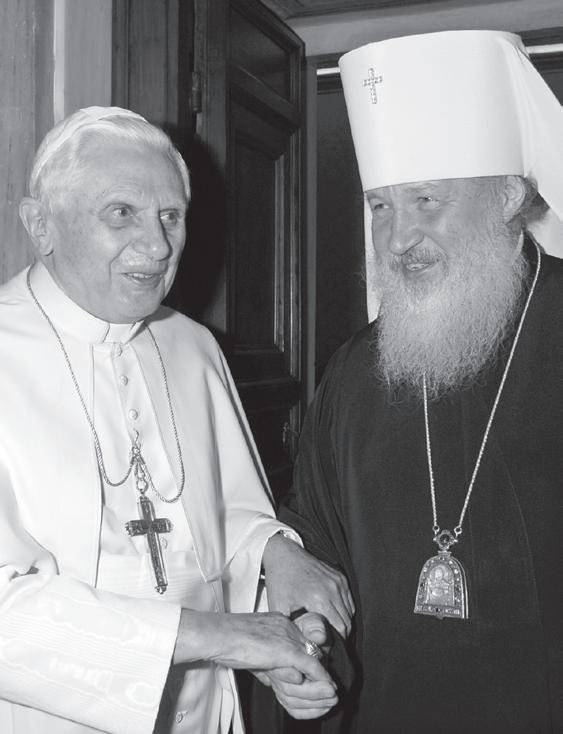
On the path to unity, the bishop added, “meetings between experts are no longer sufficient.” Rather, ecumenism “is a coming together of the Churches.”
and, Bishop Paglia affirmed, ecumenism is more and more “a demand of contemporary society.”
“The harmony between the Catholic Church and the Orthodox Church is ever more evident,” he said, referring to the challenges presented to all Christians in Europe and contemporary society. “Certain limits and challenges can only be faced from a perspective of unity.”
l The place for prayer should be inviting and have a prayerful atmosphere.
l During common prayer, choose a verse from the Bible that is brief and accessible; leave the more difficult passages to cate-
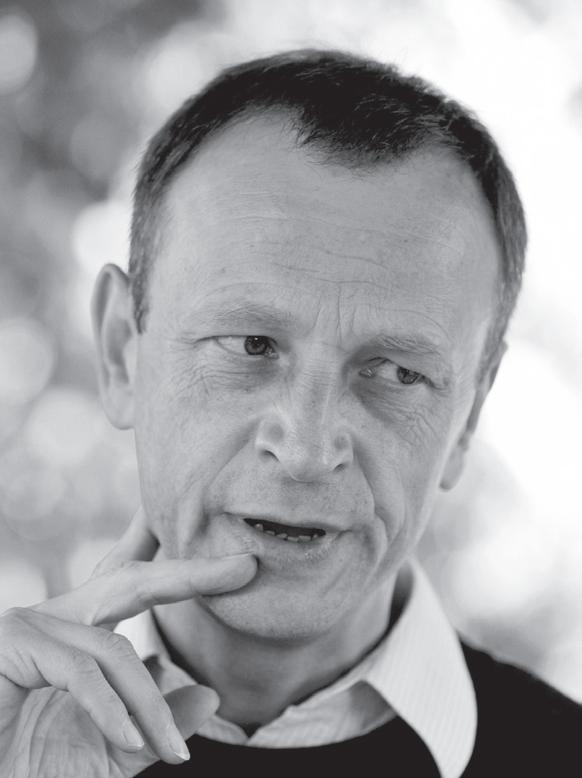
chetical study outside of common prayer.
l Let there be eight to ten minutes of silence after the reading.
l Sing the same passage from Scripture or tradition for a few minutes with the aim of giving it a meditative character. a passage that is sung repeatedly is learned more easily by heart.
l at the end of the evening service, but while the meditative singing continues, have priests available to hear confession or pastoral workers on hand to listen to what young people have on their minds.
l Highlight simple symbols and icons. For example, every Friday evening a crucifix is placed on the floor. People can place their forehead on the cross and with this gesture they are expressing that “they entrust Christ with their personal burdens and the sufferings of the world,” Brother alois said.

Historian Douglas Astolfi points to three periods of “incredible greed” on the part of wealthy corporations in American history.
The first occurred in the 1870s during a speculative boom following the Civil War. He identifies the Roaring ‘20s as the second as investors leveraged stocks to secure loans from banks to buy more stocks while the stock market took off in the post-World War I period.
And the third?
We’re living through it right now, said Astolfi, professor of history at St Leo University in St Leo, Florida.
Astolfi told Catholic News Service the latest period has been fueled by three decades of financial deregulation and a banking industry that encouraged people to buy on credit because there was plenty of money to be made off a housing bubble which no one thought would ever burst.
When the first two periods collapsed - marked by the panic of 1873 and the failure of the banking system that led to the Great Depression, respectively - the country faced tremendous hardship, especially among poor and working-class people.
It’s a bit different today, Astolfi explained, because the US government instituted protections under President Franklin Roosevelt’s New Deal in the 1930s. Steps such as federally insuring bank deposits and establishing the Securities and Exchange Commission were meant to protect the broad population from bearing the brunt of the excesses of others.
“Still, the question looms today: Is another Depression on the way?”
The economy has always recovered, growing robust and allowing the vast majority of people to live comfortable lives. Experts across the board credit the regulations governing financial activities as one step toward returning balance between the top of the economic ladder and the rest of the country.
Still, the question looms today: Is another depression on the way?
It’s possible, but highly unlikely in the minds of historians, economists and financial experts at several US Catholic colleges and universities. While massive consumer debt and the inability to repay it has fueled today’s financial crisis as it did nearly 80 years ago, various protections are in place that - so far - have prevented a catastrophic economic recession in the world’s largest economy.
“We hope that it’s not going to be the same,” said Kevin Forbes, chairman of the business and economics department at The Catholic University of America in Washington.
“But when people hear the term
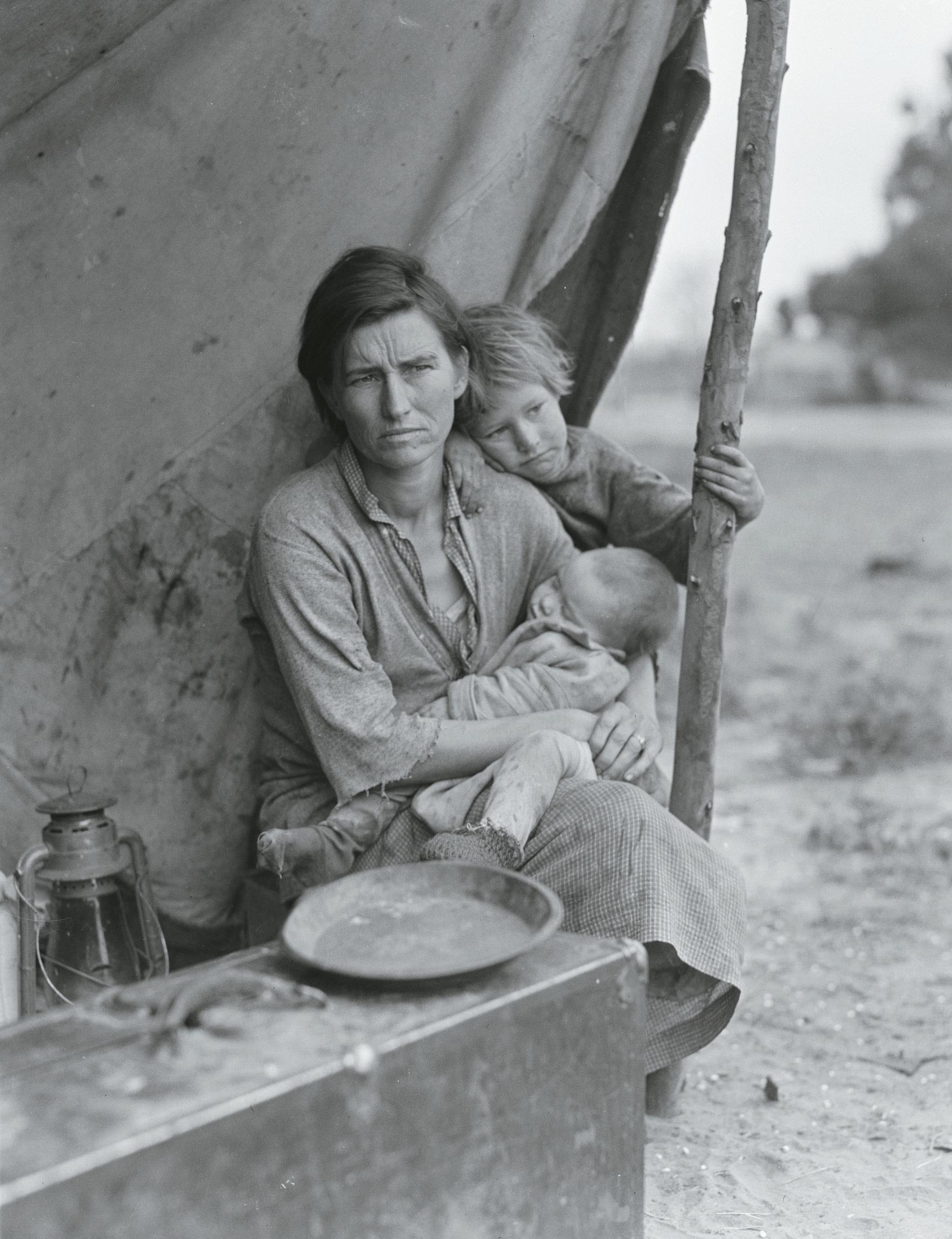
Bernanke, widely acknowledged as an expert on the Great Depression, knows that history well. He and Treasury Secretary Henry Poulson walked in lock step as they took their plan to the White House and to the US Congress, convincing both that action now was preferable to letting the financial system fail.
the Great Depression they usually think of the ‘29 stock-market crash. But that was only a small part of it.
It’s the consensus of economists that the stock-market crash was bad, but it probably would have created only a small downturn in the economy.
“What really did us in was the collapse of the banking system,” he told CNS.
That explains why US officials jumped in so quickly in September to propose a US $700 billion bailout plan to save several banks and major financial institutions staggering under the weight of worthless mortgage-backed securities.
By pouring money into the economy to buy the securities gone bad now that the housing bubble has burst, the federal government is hoping to stave off a financial collapse.
Federal Reserve Chairman Ben
The government action, which found President George W. Bush signing the bailout bill passed by Congress on October 3, came quickly, just two weeks after Poulson, a former CEO at Goldman Sachs, submitted his rescue plan.
The unusually fast action is in direct contrast to the government’s tight money policy in response to the 1929 stock-market crash, which symbolises the start of the Great Depression.
The boom in the market prior to the crash was fueled by speculators. The bull market was so strong that investors were borrowing money. However, as early as 1923 banks were failing, setting the stage for Black Thursday, October 24, 1929.
Without an infusion of funds at that time, the banking system had no cash to lend, stifling business activity. Depositors lined up at their bank’s doors demanding
to withdraw their life savings. By 1933, 40 percent of the nation’s banks failed and millions of people had lost their life savings.
Today, the danger of lost bank accounts has disappeared because of the existence of the Federal Deposit Insurance Corporation, one of many economic reforms under the New Deal, said Joan Junkus, associate professor of finance at DePaul University in Chicago. The October 3 bailout legislation boosted the amount of deposits covered by government insurance from US $100,000 to US $250,000 per account.
On the other hand, the stock market has lost nearly 40 per cent of its value since its October 2007 peak. While it’s nowhere near as devastating as the 90 per cent decline in stock values in the 33 months after Black Thursday, the plummeting market is having repercussions worldwide.
Even with the bailout, banks and other financial institutions face a long path to solvency. And there’s some talk that US $700 billion may not be enough.
“That number is so enormous, to think of it as insufficient is frightening,” Astolfi said. “If that were the case then I think we’d move toward a crisis. There’s an
awful lot of politicians and average people who just can’t see spending any more than that.”
Despite the broad support in the US for government intervention, opposition to interference with the market exists. Among those who urge a hands-off policy by the government is Larry Scheikart, professor of history at the University of Dayton in Ohio.
“It’s a cyclical recession brought on by too much bad lending,” he said of current financial conditions. But he quickly added that the current economic downturn is not “officially a recession.”
“The market will sort itself out if these guys don’t get involved,” he said.
He also blamed two other groups for the economy’s woes: those who signed for loans knowing they could not afford them and members of the US Congress who “stiff armed” lenders to expand lending opportunities to lower income people.
“There’s not a crisis in confidence in the market today,” he said. “There’s a crisis in government. The government has repeatedly screwed up.”
Still, the rescue plan is widely seen as just the first step toward rebuilding a lacklustre economy.
Forbes of Catholic University said steps to regulate the banking industry again are necessary to prevent the abuses that developed over the last decade.
“They have to,” he said. “If all they do is pass this bill and then walk away, then they’ve really done us a disservice.”
In particular, Forbes added, new safeguards will have to be put in place to prevent the aggressive practices segments of the mortgage industry used to entice people to buy into loans they eventually could not afford.
“It has to get to the point where there are standard criteria to get your mortgage approved, that the person originating the mortgage has to have some skin in the game so if the mortgage goes bad there’s some downside risk,” he explained.
Former Whitlam Government Minister Race Matthews continues his fascinating examination of the Distributist movement, which in the first half of the Twentieth Century espoused a ‘third way’ philosophy of economics and politics inspired by pioneering papal encyclicals such as Rerum Novarum and Quadragessimo Anno...
Responding to a claim by the best known Socialist of the day, Bernard Shaw, that Distributism could not distribute a factory owned by a major engineering firm among the firm’s workers – that it could not ‘distribute Armstrong’s works among Armstrong’s men’ – Cecil retorted:
“If Mr Shaw means, as I suppose he does, that it cannot distribute the ownership of the works, it might be as well to inquire first whether the ownership is already distributed. I am writing far from books of reference but I must confess that I shall be surprised to learn that Armstrong’s works are today the property of a single man named Armstrong. Perhaps they are the property of half a dozen Armstrongs, but I should think that the chances are that by this time they are the property of a limited company of some sort. That means that while the works are one the ownership is already widely distributed. I do not see why it should be harder to distribute it among Armstrong’s men than to distribute it among a motley crowd of country clergyman, retired Generals, Cabinet Ministers and maiden ladies such as provide the bulk of the share list of most industrial concerns.”
Mutualism
Where ownership of productive property on an individual or small-scale basis was impractical, a mutualist or co-operative model was preferred. Credit co-operatives and cooperative banks would provide an alternative source of capital to that of conventional financial intermediaries.
As the US Social Catholicism and Distributism scholar Dermot Quinn has noted: “Co-operatives were essential to the Distributist ideal. They combined ownership, labour for profit, reward for initiative, a degree of self-sufficiency, elimination of waste (as in the duplication of equipment and use of unnecessary middle-men), and a strong commitment to reciprocal self-help.”
The mutualist and co-operativist connection was a source of major strengths for Distributism, but also of significant vulnerabilities. Co-operatives and other mutualist bodies are best understood as exhibiting the attributes of both businesses and social movements.
In modern management parlance and agency theory, the competitive advantage of Distributism and mutualism in their business capacity lies in their ability to minimise the ‘basic agency dilemma’ whereby divergences of interest between principals and agents incur costs which defeat or detract from the purposes for which the contracts between them have been created.
Distributism and mutualism give rise to a ‘virtuous circle’, whereby all principals become agents and agents principals. Conversely, Distributist and mutualist enterprises are disadvantaged in their social movement capacity. Consistent with social movement theory, the typical lifecycle of mutualist and Distributist enterprises falls into three stages.
There is, in the first instance, a utopian stage where the urgency of the need and the vision and commitment of the founders energise their followers and bring the enterprise into being; secondly, a stage when the enterprise assumes a more formal and institutional character in order to more effectively go about achieving its objectives; and, finally, a stage –usually referred as the ‘system’ stage – where bureaucracy takes over, and the survival and well-being of the enterprise assumes precedence over its original intended purpose.
Social movement theorists characterise the cycle in its entirety as comprising a ‘generation-degeneration process.’ The system stage
invites either commercial failure as in the case of some major European consumer co-operatives – the one-time elite of the co-operative movement – or being taken over and looted either from without or within by predatory demutualisers.
Impediments
And Distributism’s development was impeded in part by inconsistencies and changing attitudes on the part of the Vatican, and insufficiencies of episcopal support. The biographer of Albert Cardinal Hinsley – Archbishop of Westminster from 1935 until 1943 - has described how, as a young student in Rome in 1891, Hinsley awaited the publication of Rerum Novarum with ‘restless longing’:
“He arranged with the young Monsignor Merry del Val to receive a copy in the morning of its release from the Vatican Press. Merry del Val arrived with the Encyclical at the English College early on the morning of May 15. The young men spent the whole morning poring over Rerum Novarum, already thinking of it as the ‘Workers’ Charter - the name soon to be given to it by general consent of the poor in every country.”
Twenty years later, the same Merry Del Val, as Pope Pius X’s Secretary of State, was instrumental in the suppression of the Social Catholicism-minded French organisation, Le Sillon, and the rebuking of its close affiliate, Catholic Action for French Youth, for offences that admit interpretation as having been to take the teachings of the encyclical too seriously – namely, for “the unreasonable enlargement of the domain of justice to the detriment of that of charity, and the subordination of the right of property to its use, usage being made into a function, not of charity, but of justice.”
Few setbacks can have been as crushing to Distributism or prejudicial to the morale of its adherents as the English Hierarchy’s having turned its back on so early an example of practical, hands-on Distributism as the Catholic Rural Land Movement, in a decision to which Hinsley may have been party.
A summary of the thinking of the Land Movement and its Catholic Rural Land Association affiliates by their principal spokesman, Harold Robins, reads: “If men were taught to farm, primarily to feed their families, secondarily to feed neighbours grouped in social communities round them, and only finally to market their surpluses co-operatively, it seemed not only would the marketing problem assume more modest proportions but the revival of social contacts would reverse the rural decline.”
The Movement was accorded papal approval in 1933, in a letter over the signature of the then Vatican Secretary of State – and future Pope Pius XII – Cardinal Pacelli. Pacelli wrote:
“The Holy Father has heard with satisfaction of the progress already made by the five Catholic Land Associations of Great Britain, and prays this important work of restoring the sane and healthy life of the countryside may be abundantly blessed by God and result in a diminution of unemployment through the development of the agricultural resources of the country to the fullest possible extent. As an encouragement to persevere in this good work, His Holiness most gladly imparts his Apostolic Blessing to all who are engaged in helping to further this most praiseworthy enterprise.”
Unhappily, no comparable expressions of good will – much less more tangible support – were forthcoming from the Catholic authorities in England. The Movement and the Associations effectively had to discontinue their activities when the Hierarchy refused its permission for an annual nationwide collection to pay for the properties that the trainees were now ready to occupy. Robbins commented bitterly that “The Catholic authorities in England have never shown any other sentiment than embarrassment to have their principles stated so eloquently.”
As a more recent account so acerbically concludes: “Although the Catholic hierarchies were happy to support the initiative on the moral level, they were not prepared to back up that support on the practical level. It was a grievous misunderstanding of the true situation of society in that day.… The answer was a categorical ‘no’.”
Distributism’s difficulties also were reflective of its gestation having coincided with a

retreat from the social concerns and priorities of the Leonine pontificate. Faced as Leo’s successors found themselves with the onset of the cataclysmic ‘Short Twentieth Century’ from the start of World War I in 1914 to the fall of Communism in 1991, their response was the Anti-Modernist conservatism and rejection of change that the contrast between the young and older Merry del Val – and perhaps as well the young and older Hinsley – so richly exemplified.
The papal mood and mindset were reflective of an antipathy towards innovation and experimentation from which social movements such as Le Sillon and the Distributist Land Associations could not hope to be immune.
In the event, British Distributism withered on the vine with the death of Gilbert Chesterton in 1936 and the coming of the Second World War. His brother Cecil had pre-deceased him as a World War I casualty, in 1918.
The movement’s demise occurred largely because its adherents were interested far more in talking about it than in giving it effect. As Gilbert’s biographer, Maisie Ward, has noted, when a Distributist League ultimately came to be formed in 1926, it was begged to spend more time clarifying its principles, less time in criticism: “But much more fundamental for the League was the constantly recurrent question of when it was going to begin to do something? To this the answer, given often by G.K. himself, was that, while the League hoped in time to create the community of which he had written, its own work was only that of Propaganda – of a wider and wider dissemination of the principles of Distributism. Their work, they said, was to talk.…”
One sees the point, of course; yet I cannot help feeling that it would have been better if the majority of the League had done some bit of constructive work towards a Distributist world and sweated out of their system the irritability that found vent in some of their quarrels.… The main body of Distributists would have learnt their own principles better by trying to act on them, and been far more effective in conveying them to others.
However, the Distributist idea did not die with Gilbert as many supposed, but rather had immigrated earlier on to Canada. It was alive and well in Nova Scotia, and being carried forward there by the Antigonish

new Distributism on the basis of adult educa-
Their aim was to enable local communities to become ‘masters of their own destiny’ and enjoy ‘the good and abundant life’, by mobilising local and regional resources for regional economic development.
Coady wrote: “We start with simple things that are vital to human living and move on up the scale to the more cultural and refining activities that make life complete. Through credit unions, co-operative stores, lobster factories and sawmills, we are laying the foundations for an appreciation of Shakespeare and grand opera.”
The magic and magnetism of the Antigonish Movement in its heyday is now insufficiently remembered or understood. Maisie Ward credits the Movement with “a happy blending of theory and practice”: “For the University itself has its Extension Movement and by its organ The Maritime Co-operator provided the theory, while up and down the country co-operative groups have built their own
waves and governments scramble to reassure depositors...
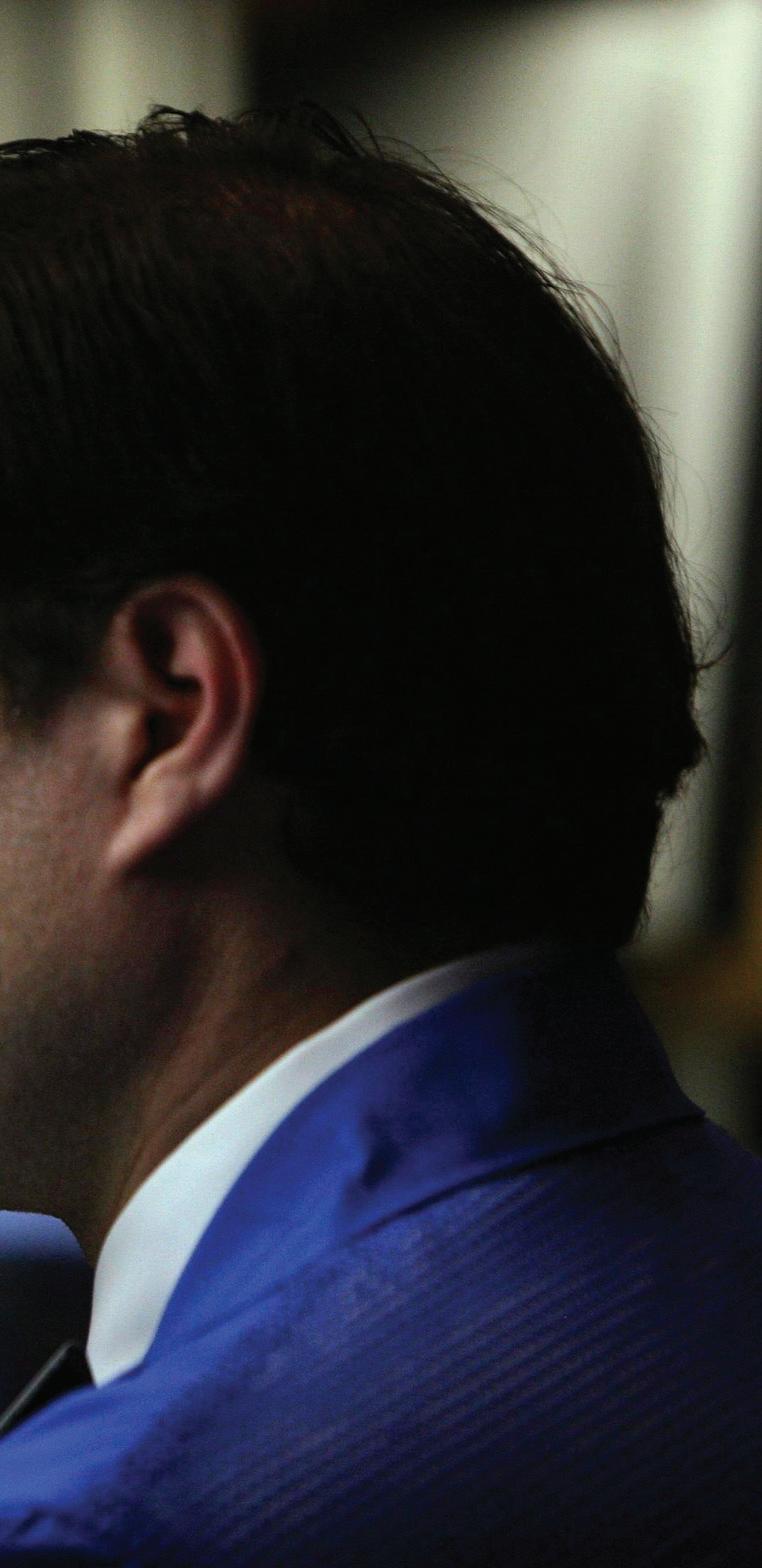
houses and canneries, started their own cooperative stores and savings banks and made the Maritime Provinces a hopeful and property- owning community of small farmers and fisher folk.”
As Coady’s biographer, Michael Welton, has so vividly recalled: “Antigonish, now a rural town like so many others, graced by malls and fast-food outlets, glowed with a radiant light in the 1930s and 1940s.… For an evanescent historical moment, the Antigonish Movement captured the imagination of the world. Journalists, liberal-minded religious leaders, papal authorities, eastern seaboard intellectuals, professors, theologians, social reformers, wild-eyed dreamers, co-operative leaders and innocent youth came from far and wide to witness the ‘miracle of Antigonish’. Hard minds and doubting hearts were transformed by the co-operative miracle as tourists witnessed rustic lobster factories springing up in communities with previously unremarkable histories.”
If Antigonish ultimately asked more of consumer co-operation and credit unionism than they were able to deliver, that in no way detracts from the energy its adherents devoted to their cause, nor from the short-tomedium term alleviation of endemic poverty, the enhancement of human dignity and the restoration of hope that they accomplished, and the inspiration and encouragement they afforded for others after them and afar off.
It remained for a further notable priest, Don Jose Maria Arizmendiarrieta, to bring an evolved Distributism to triumphant success, through the great worker co-operative complex – now the Mondragon Co-operative Corporation – that he founded at Mondragon in the Basque region of Spain.
The essentials of the Mondragon story are simple. What began in 1956 as a handful of workers in a disused factory, using hand tools and sheet metal to make oil-fired heating and cooking stoves, has now become a massive conglomerate of some 160 manufacturing, retail, financial, agricultural, civil engineering and support co-operatives, with jobs for 71,000 workers, assets of $US22.3 billion and an annual $US12.6 billion in sales.
Consistent with Cecil’s retort to Shaw, all workers are members of the businesses in which they are employed, with an equal say in their governance on a one member/one vote basis and sharing on a proportionately equal basis in the profits or losses.
The key Distributist objective of a sus-

When the world’s major financial institutions have been falling like dominoes, German banks based on something very similar to distributist principles have withstood the shock and remain largely unaffected by the
Wall Street crisis, reports the US National Public Radio network
n by Tom GjeltenThe Sparkasse logo stands illuminated on the facade of a bank branch in Leipzig, Germany. Europe is still struggling to come up with a united response to the financial crisis sweeping the continent. Amid the turmoil, however, one banking system is sound and secure, according to a report from the US National Public Radio network.
The more than 400 savings banks in Germany’s Sparkasse system have for many years followed a conservative strategy. And its clients are now reaping the benefits.
The Sparkasse banks are the German equivalent of a savings and loan. But they’re owned by local governments — not private investors — and they serve average Germans, like 58-year-old Wolfgang Schwabe.
“I’m a small saver,” says Schwabe, who is a computer engineer. “I don’t have any stocks, mutual funds, nothing like that.”
Schwabe gets no more than 4 percent interest on the money he has deposited in his local Sparkasse bank, but it’s safe.
The bank loans money out to local smallbusiness owners and to people looking to buy a house or a car. But the collateral requirements are steep: At least 20 percent is needed for a mortgage. So while stockholders in the United States and elsewhere fret over the losses in their stock portfolios, Schwabe and his fellow Sparkasse savers breathe easy.
“If you think about it,” Schwabe says, “the financial crisis means one thing — I was right not to take a risk with my money.”
The Sparkasse system is tailor-made for investors like Schwabe. The banks serve all customers, no matter how small. Across
tainably widespread distribution of property has been achieved by the co-operatives, in as much as members have property of four kinds:
l ownership of their jobs
l direct personal ownership of capital held for them in individual capital accounts l a shared ownership of the assets of their co-operatives such as buildings, equipment and reserves; and
l a further shared ownership – albeit less
the country, they hold nearly $1 trillion in deposits.
“The Sparkasse banks have been important for many years,” says Stefan Marotzke, head of public relations for the Sparkasse system. “They allowed the private banks to go after the big business because the Sparkasse took care of the guy on the street.”
The rest of the banking system in Germany is in as bad a shape as the other institutions in Europe.
The Sparkasse banks have been especially important in Germany because, on the whole, German investors are far more conservative than Americans or other Europeans. Just 10 percent of the population is invested in the stock market. In the United States, more than half of working adults own stocks.
“It seems that Germans have a very strong demand for safe assets, and then they do not mind too much if the return of these assets is not that high,” says Stefan Kooths, an economist at the German Institute for Economic Research in Berlin.
During the telecommunications boom, Germans were tempted to dabble in stocks.
For a time, the Sparkasse banks were out of favor. But after they lost a lot of money in the collapse of the telecom bubble, Germans came back to the Sparkasse, Marotzke says. “For many years, the Sparkasse banks were considered old-fashioned, boring, not very modern,” Marotzke says. “But in the past two or three weeks, everyone who was criticizing it is now saying, ‘Gosh, we are so lucky to have this system in Germany.’”
Professional economists like Kooths still think the Sparkasse system is a bit old-fashioned. Kooths thinks his countrymen may be a bit too conservative with their money.
“I’m not really convinced that the Germans are very clever in what they do, because we have very strong enterprises here that make a lot of profits,” he says. “But most of these profits go to foreign investors, so the Germans do not really make the most of their money. They may be lucky today as we have this crisis everywhere, but in the longer perspective it’s not the best idea to be so reluctant to run the risk on the stock markets.”
When stocks rebound, it may be that Germans will be tempted again to take some risk. But for the moment, deposits in the Sparkasse banks are increasing across the country.
- US National Public Radio
direct – of the unique secondary support co-operatives in which the primary co- operatives are major stakeholders.
Modern, evolved Distributism as exemplified by Mondragon is, in a sense, most usefully to be understood as the form in which Socialism of the mutualist, associative and communitarian kind originally embraced by Belloc and the Chesterton brothers and countenanced by Manning and Rerum Novarum has been re-born, following the well-inten-
tioned but ultimately counter-productive flirtation with statism that so comprehensively distracted it throughout the greater part of the twentieth century.
Australia
And what of Australia? Maisie Ward concluded her 1944 biography of Chesterton with an assessment that today cannot be read without emotion.
She wrote: “There has been a great stirring of the waters in every country: each has taken and has given to the other, and most of those thus cooperating have been the ‘little’ men whom G.K. loved... In Australia Distributism has given a fresh slant to both Labour and Catholic leadership. The Campion Society founded in Melbourne in 1931, the Catholic Guild of Social Studies in Adelaide, the Aquinas Society in Brisbane, The Chesterton Club in Perth and the Campion Society in Sydney have all based their thinking and their action on the Chesterbelloc philosophy. These groups have closely analysed Belloc’s The Servile State and Restoration of Property and have applied its principles in their social action in a most interesting fashion.… Most important, however, of all the Australian developments has been the approval of the main Distributist ideal by the Australasian Hierarchy as the aim of Catholic Social Action.”
How far short has not reality fallen of Ward’s hopes for us? How sixty and more years later cannot but we be haunted by a profound sense of lost opportunities and defeat snatched from the jaws of victory? How indeed shall not her words resonate for us with that most prescient and terrifying of all passages from Tolkein: “We have fought the long defeat”?
Yet standing by the grave of the founder of the co-operative movement, Robert Owen, as I did in the northern hemisphere summer of 1989, standing in 1996 by the graves of Jimmy Tompkins and Moses Coady on the hillside above the university at Antigonish, and standing in 1997 by the statue of Arizmendiarrieta in the courtyard at the university in Mondragon, it seemed to me that no good idea is ever wholly lost.
Buried as Distributism has sought to be by many, it has re-emerged at Mondragon as a beacon of hope for a world where hope has become a rarity.
Were the original Distributists alive today, the shape of modern, evolved Distributism as at Mondragon – the synthesis between Distributism and mutualism that is Arizmendiarrieta’s legacy to us – might well surprise them. It is unlikely that they would be disappointed.
And as the world once again teeters on the verge of convergent catastrophes, may not it yet come to be affirmed of Distributism in the words of Victor Hugo, that “nothing is so powerful as an idea whose time has come”?
Dr Race Mathews is currently working on a Doctorate of Theology thesis on ‘Manning’s Children: Distributist Responses to Rerum Novarum in Australia 1891-1966’. He is a Board Member at the Melbourne Recital Centre and the Australian Centre for the Moving Image, and a former academic, federal MP, state MP and minister, municipal councillor and chief of staff to Gough Whitlam as Opposition Leader in the Australian Parliament. His books include Australia’s First Fabians: Middle Class Radicals, Labour Activists and the Early Labour Movement and a history of Distributism published as Jobs of Our Own: Building a Stakeholder Society’
The talk from which this article was taken was originally delivered to the Australian Chesterton Society Conference in Sydney just before World Youth Day. All talks from the conference are available on DVD or CD from: Servant Media PO Box 350 Seven Hills NSW 1730 Servant Media can also be contacted via email: chris@servantsofjesus.org
Distributism on the www
Caught the Distributist bug or want to know more? Among interesting Distributist websites can be found the encyclopedic site titled The Chesterbelloc Mandate, which can be found on the web at: www.distributist.blogspot. com
It has links to hundreds of other sites inspired by Distributism and its earliest exponents.
Without my faith I’d be a nasty piece of work... Forgiving abusers is our duty
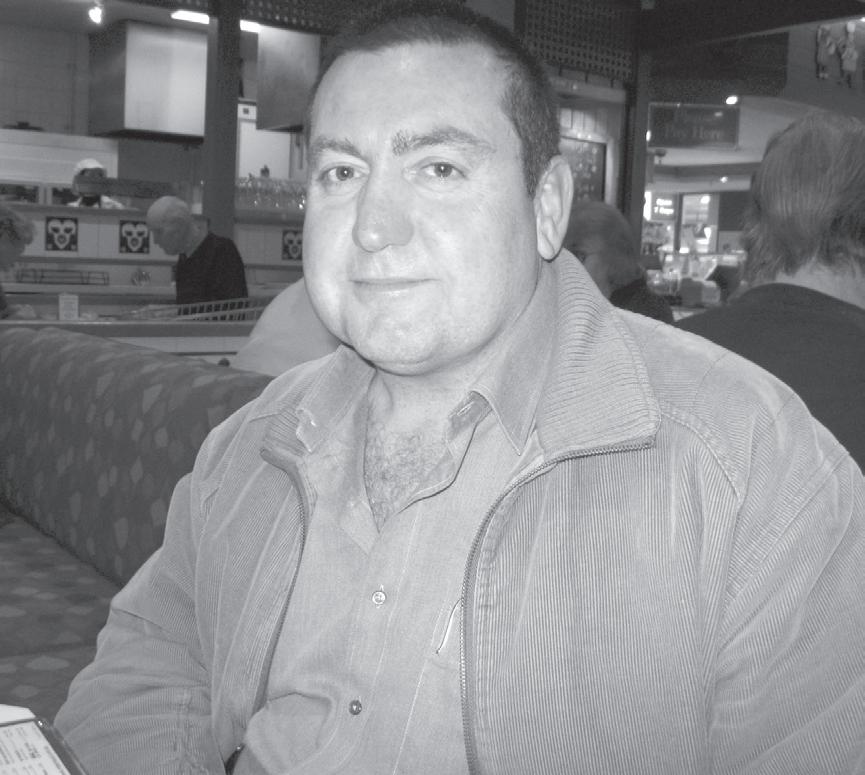
Ipray in a variety of ways. A lot of it I do through meditation. I attend Adoration on Monday mornings. I do a lot of conscious praying and listening. I pray on the way to work and in my spare time. On weekends we do church. You’ve got to be careful of asking too much from God… sometimes you’ve got to say, “Thank you.”
Without my faith I’d be a nasty piece of work. Faith gives me some boundaries. It gives me parameters to make choices by. There are a lot of opportunities in this world to do greedy and selfish things. If you don’t have something to measure that behaviour against you could easily go down the wrong path.

 with Debbie Warrier
with Debbie Warrier


I’ve been with the Personal Advocacy Service for four years. PAS provides a spiritual path for people with intellectual disabilities. I have been the advocate for Michael since I joined. I focus on the friendship side rather than the spiritual side.
Michael is Greek Orthodox. It’s still in tune with what we are trying to do. He is very aware of God and all the work I do with him is with regard to that. I also go out with Michael socially.
I joined PAS because I wanted to give someone my time, to contribute something if you like. I was at Church and one of the PAS advocates got up and spoke about their work.
I was very hesitant and uncertain about what I was getting myself into. But I rang one of the representatives that evening and asked her to tell me more about it. I decided to get involved.
‘Advocates’ refers to members who reach out to people with the disabilities or as we call them our friends. The advocates meet fortnightly. We discuss General Business, have some reflective readings on daily life and then we do a spiritual exercise. Our friends don’t attend this.
Every alternate week both advocates and friends do some quiet activities. We try to bring the tempo down a little bit. Sometimes we talk about the things that have gone on during the week. Afterwards we go into the chapel and do a spiritual exercise or reflection. That helps us focus on God. We follow this with agape which is basically supper. We talk and then we drive our friends home.
For the spiritual exercise we have a theme, like Jesus as our Shepherd. We might take a photograph for example. As a pair we comment on what that means in terms of the theme. Then we have spontaneous prayers. We usually try to keep it in line with the theme.
Our friends don’t always stay on that theme which can be humorous. We end with some songs.
I think of it as putting my faith to work.
I admire Mother Teresa and how she put into practice what she believed. Her way of life reflects what I try to do.
People like me can learn quite a lot from our PAS friends. You don’t have to understand everything to do with faith.
There are some things that we are never going to understand. Trying is all you’re expected to do.
The fact that you can’t understand doesn’t diminish God’s reality or power.
When it comes to faith we are all on equal footing.
debwarrier@hotmail.com
Recognising God’s creation in the humans behind atrocities
I say I sayBy Mark Reidy






“I hope he rots in Hell!” is the most common response Donald Nohs hears when he tells people about his childhood experience of being sexually abused by a priest. This is then followed by confusion, and sometimes offence, when Nohs explains that he has forgiven the priest and, in fact, prays for him.
In his book, My Story of Forgiveness, Nohs acknowledges that his decision was an extremely difficult one to make, but he believed as a Christian it was one that he needed to fulfil.
“Forgiveness and reparation are hard to understand if I stay self-centred”, he writes, but “when I put Jesus in the centre of my life, I do understand.”
It is almost the ultimate test of our Christian walk; how, in our hearts, do
we treat those who are guilty of child sexual offences? In our humanity it is one of the few issues that, not surprisingly, unites most people.
This is not to say that we shouldn’t respond to the act itself with the righteous anger that it deserves, but once our spontaneous emotional response has subsided, are we able to, or do we even attempt to, separate the sin from the sinner? A popular, newly released TV series banks its success on the fact that most people in society are either unable or unwilling to do so.
Dexter is yet another police/forensic drama, but one with a twist. Dexter, the main character, is a blood-spatter specialist with the Miami Police Department who is very good at what he does.
The problem is, Dexter sees himself as a vigilante and he tracks down perpetrators in his spare time and instigates his own sense of justice. Not surprisingly in the first episode, Dexter kidnaps a man who is responsible for the abuse and murder of young children and takes him to the scene of his crimes and watches the man break down. “I couldn’t help myself”, he confesses with a whimper. “Neither can I”, responds Dexter and what follows is gruesome revenge, which author Jeff Lindsay says
viewers will be able to relate to. He believes that there is a part within each of us that can connect with Dexter’s desire for payback.
As a father of three young children I dare not even allow myself to venture into the depths of emotion that such a topic stirs up within me, which may indicate a truth, at least for me, in Lindsay’s words.
It is why Donald Noh’s choice to forgive his perpetrator causes me to take stock of exactly how I measure up in my own journey to Christ-centredness. It is a question we cannot answer for anyone but ourselves, as we do not know the heart behind another’s reaction.
However it is one that could serve as a gauge of self-revelation in demonstrating exactly how far away we are from the perfection of God’s love. Our union with Christ has called us to a Divine love that embraces all humanity, whether friend or foe.
He has called us to love the paedophile, the murderer or those who have hurt us the most, with a love that is beyond our own emotions. It is not a call to accept their behaviour, but to recognise God’s creation in the human beings behind these atrocities. It is a call to live out Jesus’ most challenging invitation to “love your enemy”.
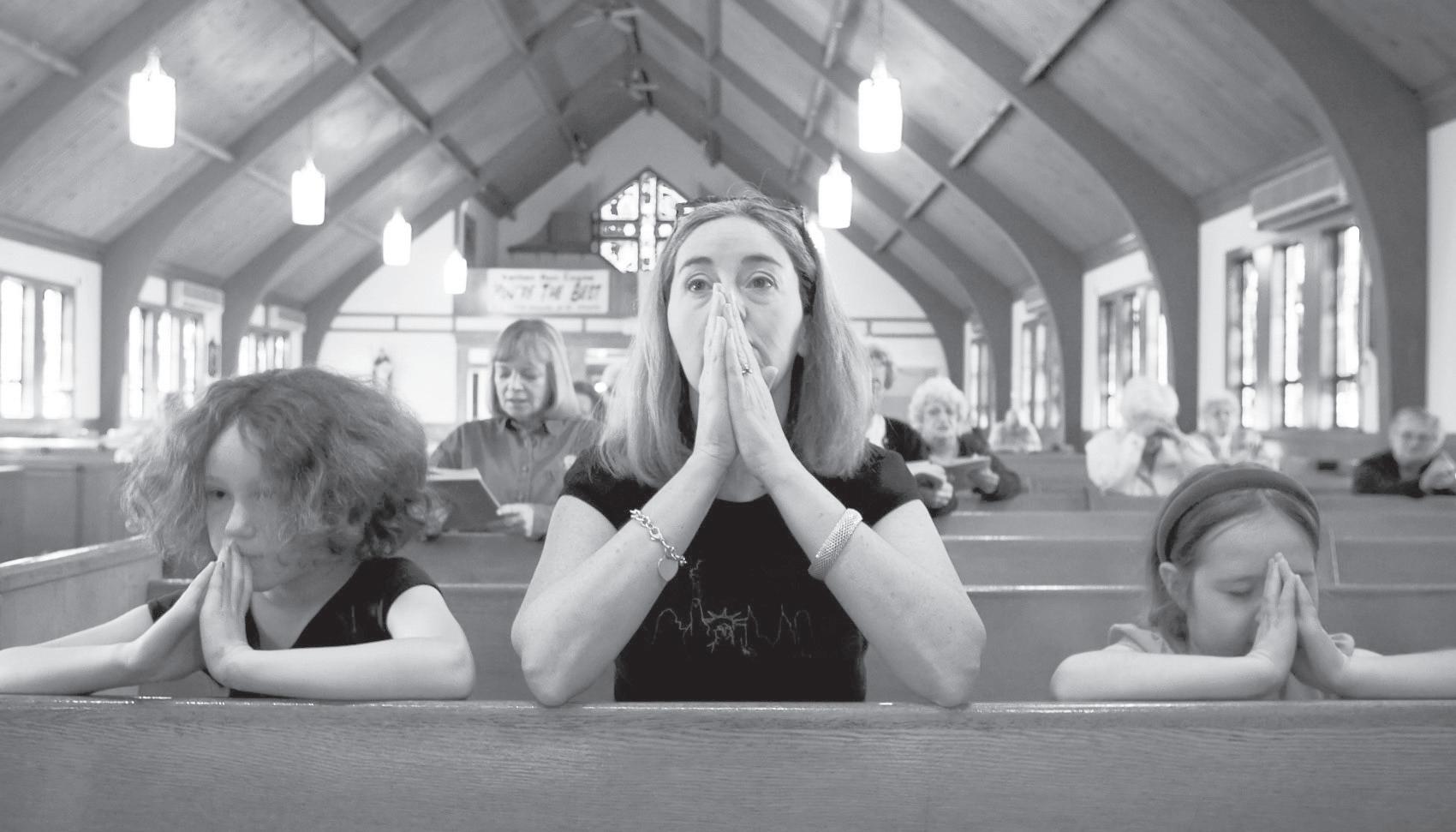
Mass is about recognising graces that are freely given, and praying and standing with those suffering.
How easy it is to become complacent about our lives, especially during the springtime where everything seems fresh and bright; the vibrancy of the leaves bursting fresh from their stems and the hint of summer heat at last in the air. We trundle off to Mass and so often go through the routine as a matter of course rather than giving our full attention to the vital and soul supporting grace that we are told pours forth during each and every Mass.
Certain parts of the Mass tend to become very peripheral at times when things seem to be going well for us.
The Prayers of the Faithful, and in particular those prayers which are offered for those sick and dying, can appear to be said as a matter of course rather than with the full fervour that should be the basis of real prayer.
It is often that only in times of grief that we suddenly find ourselves really listening and turning to these prayers as offering us hope and comfort dur-

ing the most difficult parts of our lives. When the sudden changes in our lives overshadow the sky that only moments before seemed of the brightest blue it makes one realise how many of those about us may also be going through private struggles and need our support and prayers to help them through the darkness.
Prayers may not always work visible miracles, and they cannot bring back those who are lost to us, but knowing that those about us share our concerns and are begging God to help us in times of trial is a great comfort.
We may not be able to tend the sick, or change the daily hardships that must be suffered by those in the throes of grief and trauma.
But where there is expressed and public prayers offered in faith and with a heartfelt desire to bring comfort to those around us who are suffering, it
can help strengthen and support those who need it most.
The ‘Communion of Saints’ suddenly becomes a more real, vital and very comforting belief.
We live in a society where public grief is not encouraged and people are often reluctant to share their sorrows. Most of us are taught to “keep a stiff upper lip” in public while our hearts might be crying out for someone to help us through the private sorrows we are enduring.
Each week in Mass there may be those sitting right beside you who smile through their tears and wish you well at the Sign of Peace, or may be praying fervently while the rest of us say “Lord hear our prayer” without really giving a second thought to what or who we are praying for.
So next time we reach the parts of the Mass where we remember those who have died or are asked to remember those who are currently sick or suffering, remember that it may be your neighbour in the pew who is coping with the sadness and uncertainty of grief or worry and know that your remembrance of them in your prayers is at least something you can do each Mass to help them find strength, peace and comfort.

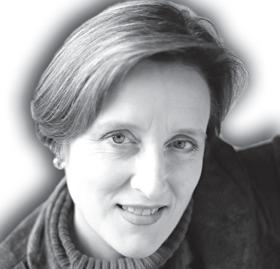 By Anna Krohn
By Anna Krohn
Last week a tram trundled past Parliament House in Melbourne bearing a striking but under the circumstances ironically timed message.
It was a promotion for a blood bank. On it stood what appeared to be an enthusiastic looking nurse and her dialogue box proclaimed: “Today I helped to save the life of an unborn child.”
The promotion was effective because it tapped into some residual and shared Australian attitudes. One is the high degree of respect and trust with which the nursing profession is viewed in this country. Nurses regularly top popular surveys of “most respected professions”.
The second is the admiration we have for altruistic but “ordinary” people in general and the giving of blood in particular. In Australia there is strong resistance to the idea of payment or undue incentive for such “giving”.
What is most notable about the large banner though, is that despite the widespread practice of abortion in Australia, we are nonetheless encouraged to see the high moral worth of decisions which contribute to the life and well being of the unborn and their mothers.
This “kindly” advertisement does expose the profound ethical ambiguity towards the practice of abortion, to pregnancy and to the status of the unborn that lies at the heart of contemporary secular society.
A picture of this confusion and sometimes contradiction is documented in the survey of Australian attitudes contained in Common Ground: seeking an Australian Consensus on Abortion and Sex Education published last year.
The study found that Australians, however compromised their opposition to particular abortions, generally believe that abortion is a regrettable and even tragic “choice.” In general people somewhat vaguely think that viable alternatives should at least be presented to women in difficulty and that “better” choices should be promoted by public institutions.
In practice this lack of theoretical clarity and moral determination generally means that the “choice” either to continue or terminate a pregnancy is a privatised and burdensome process which very often does not include adequate space or information by which a woman has “freedom of choice” at all.
However the Abortion Law Reform Bill 2008 that was passed 23-17 through the Upper House of the Victorian Parliament last week is legislation which casts the question of “choice” into an entirely different light.
It is neither what Premier John Brumby declared to be the “modernisation” of the
State’s law nor the recognition of the current “status quo.” It will not, as some of the parliamentarians report, simply “remove criminal sanctions from women who have aborted.”
The new Bill is a confused and badly drafted enshrinement of so-called “pro-choice” ideology which serves neither to encourage informed choices for women nor to respect the ethical or medical standards of healthcare professionals particularly of nurses.
One of the most vocal and influential supporters of the Bill was the former Victorian Premier – Joan Kirner.
Joan Kirner is the founding eminence gris of Emily’s List (the pro-choice feminist network). She and other List founders, declared with “tears of joy” that the Bill represented the fruits of 45 years of campaigning through women’s bureaucracies and organisations.
However it was noted that “celebration” would be premature until it is certain that no “undermining” amendments are also accepted.
For Mrs Kirner it is important for the Bill not to limit the “right to abortion” whether on the grounds of foetal age, or processes which protect maternal informed consent or because of the conscientious belief of a medical practitioner, nurse or institution.
How is the notion of unquestioned “demand” more respectful to a woman than the opportunity for considered, informed and supported decision-making?
Many of the clauses in the present Bill are absurd or unjust.
Most oppressive of all is the provision which requires a medical practitioner who has a conscientious objection to abortion to disclose her or his conscientious objection to abortion and to refer the woman to a practitioner “known” to have “no conscientious objection to abortion.”
A number of legal and ethical reports to the Parliament have pointed to the serious conflict this creates with Victoria’s Charter of Human Rights.
Additionally, as doctors, medical students, the Australian Medical Association and nurses have already warned, it treats abortion with less seriousness than other medical procedures (in which counseling, cooling off and safety are matters for consideration).
It also relegates doctors and nurses to the position of mere technicians who will no longer be commended for having important ethical and medical judgements within their purview.
The Age writer Ray Cassin has rightly observed: Just why do defenders of this provision in the Bill believe it is necessary? It surely cannot be any possibility that a woman seeking an abortion might be unable to find a doctor willing to perform one. That information is already widely available, and there are not even remotely likely circumstances in which it would not be.
The provisions in the Bill limiting the prerogatives of conscience indicate a disturbing mindset, one that finds it offensive that there are contrary views to that which under law will prevail, and which, in practice if not in avowed intent, seeks to suppress them.

Can a man marry a man? Can a woman marry a woman? Can a man simultaneously marry several women, or a woman several men? Can a man simultaneously marry several men, or a woman several women? Can a man marry his sister or his mother? His brother or his father? Can a woman marry her brother or father? Her sister or mother? All of these questions are now on the table in our culture. They cannot be properly answered unless we know what marriage is. As Catholics, we have an incredibly rich body of teaching to draw from in order to understand the

nature, meaning and purpose of marriage. Let’s begin with a basic definition drawn from Canon Law and the Second Vatican Council. Then we’ll look at each of its parts.
Marriage is the intimate, exclusive and indissoluble communion of life and love entered by man and woman at the design of the Creator for the purpose of their own good and the procreation and education of children; this covenant between baptised persons has been raised by Christ the Lord to the dignity of a sacrament. Intimate communion of life and love: marriage is the closest and most intimate of human friendships. It involves the sharing of the whole of a person’s life with his/her spouse.
Marriage calls for a mutual self-surrender so intimate and complete that spouses – without losing their individuality – become “one,” not only in body, but in soul. Exclusive communion of life and love: as a mutual gift of two persons to each other, this intimate union excludes such union with anyone else. It demands the total fidelity of the spouses.
This exclusivity is essential for the good of the couple’s children as well.
Indissoluble communion of life and love: husband and wife are not joined by passing emotion or mere erotic inclination which, selfishly pursued, fades
quickly away. They are joined in authentic conjugal love by the firm and irrevocable act of their own will.
Once their mutual consent has been consummated by genital intercourse, an unbreakable bond is established between the spouses. For the baptized, this bond is sealed by the Holy Spirit and becomes absolutely indissoluble.
Thus, the Church does not so much teach that divorce is wrong, but that divorce is impossible, regardless of its civil implications.
Entered by man and woman: the complementarity of the sexes is essential to marriage. It’s not that two men (or two women) could marry, but the church won’t “let them.”
If we understand what marriage is, we will see very clearly that it is impossible for members of the same sex to marry.
At the design of the Creator: God is the author of marriage. He inscribed the call to marriage in our very being by creating us as male and female. We, therefore, are not able to change the nature and purposes of marriage.
For the purpose of their own good: “It is not good that the man should be alone” (Gen 2:18).
Conversely, it’s for their own good, for their benefit, enrichment, and ultimately their salvation, that a man and woman join their lives in marriage.
And the procreation and education of children: Children are not added on to marriage and conjugal love but spring from the very heart of the spouses’ mutual self-giving as its fruit and fulfillment.
Intentional exclusion of children, then, contradicts the very nature and purpose of marriage.
Covenant: While marriage involves a legal contract, a covenant goes beyond the minimum rights and responsibilities guaranteed by a contract.
A covenant calls the spouses to share in the free total, faithful and fruitful love of God. For it is God who, in the image of his own Covenant with his people, joins the spouses in a more binding and sacred way than any human contract.
The dignity of a sacrament: Marriage between baptized persons is an efficacious sign of the union between Christ and the church, and, as such, is a means of grace. That is, marriage – in as much as the union of man and woman truly symbolises Christ’s love for the church – really communicates Christ’s love to the spouses and, through them, to the whole world.
We must find ways to respond charitably and forthrightly to the challenges posed by the modern move to redefine marriage. We will explore ways to do that in the next column.
‘Learn of Jesus not as historical figure but as the Lord who is among us today’

VATICAN CITY (CNS) - People need to learn about Jesus not as a historical figure but as “our brother, the Lord who is among us today,” Pope Benedict XVI said.
Biographical details and a chronology of events give people a superficial idea of who someone is; “only with the heart does one finally truly know a person,” the Pope said on October 8 at his weekly general audience.
Jesus’ life, teachings, his death and resurrection are important things to discover not as things of a distant past but as “a reality of the living Jesus,” the Pope told around 25,000 people gathered for his audience in St Peter’s Square.
The Pope focused on St Paul’s knowledge of “the so-called
historical Jesus” given that the saint never met Jesus during his earthly ministry.
He said St Paul’s understanding of Christ and his teachings came from the apostles and the early Christian community. St Paul took this information to a new level by transposing Jesus’ proclamation of the kingdom of God to what the kingdom meant after Jesus’ death and resurrection.
The risen Jesus is in God’s kingdom “and that kingdom of God goes where Jesus is going,” the Pope said.
He said that in St Paul’s writings to the Romans, newly baptized Christians refer to God as Jesus did by calling him “Abba,” an informal term for father.
Jesus used the term to “express the exclusivity” of his relationship to God as his one and only son, the Pope said, even though it was unthinkable at the time for a Jew to refer to God with such informality.
In his writings, St Paul said the newly baptized can speak “like Jesus as true children of their father,” the Pope said, adding that they can say “Abba” because “they have received the spirit of the Son” and have become God’s children through the Son.
Pope Benedict said St Paul teaches today’s faithful that learning all the facts about Jesus’ earthly ministry is secondary to using one’s heart to know Jesus.
VATICAN CITY (CNS)Translating the Bible, making a copy affordable, helping people understand it and, especially, helping people live its message are important tasks for the Catholic Church, although the priorities differ from continent to continent.
Before individuals began addressing the world Synod of Bishops, synod organisers chose five bishops to report on October 6 on “The Word of God in the Life and Mission of the Church” in Africa, the Americas, Asia, Europe and Oceania.
Nigerian Archbishop John Olorunfemi Onaiyekan of Abuja, a well-known biblical scholar, said most African Catholics were thirsting so much for the word of God that “they were ready to lap dirty water from the poisonous pools in non-Catholic terrains.”
While the archbishop praised the remarkable work done by mainline Protestant churches and organisations to translate, print and distribute Bibles in Africa, he also said there were many anti-Catholic, fundamentalist groups using the Bible to try to lead Catholics away from the Church. “Africa is unfortunately the dumping ground for all kinds of crazy ideas from other continents,” he said.
Since the Second Vatican Council, Archbishop Onaiyekan said, the Catholic Church has made great strides in emphasising the importance of the Bible in the liturgy and in the life of the faithful. While missionaries were motivated by the Gospel, they taught the people the catechism and Catholic doctrine, not the Bible, he said.
“It used to be said that while Protestants went to church carrying their Bibles, the Catholics went to church clutching their rosaries and their missals, if they had any,” the archbishop said.
Indian Archbishop Thomas Menamparampil of Guwahati, presenting the report on Asia, said that while Christianity was born
on the continent, its declaration as the official religion of the Roman Empire in the fourth century identified it so closely with the West that most Asians resisted its message. When Asians are drawn to Christianity, he said, they are attracted less by preaching than by the “‘word’ translated into action.”
Offering health care and education, helping the unemployed and the oppressed, caring for people with AIDS or drug addictions, fighting the caste system and discrimination against women, Catholics have shown Asians the true meaning of the Gospel, the archbishop said.
“Even where the Gospel is resisted most, the evangelical witness of socially relevant works finds welcome,” he said. “Silent but sincere service has an eloquence of its own.”
Referring directly to fundamentalist Hindu attacks on Christians in India recently, as well as other situations of pressure or outright persecution, Bishop Menamparampil said, “the patience manifested by the community, the restraint shown, the moderation in response, the spirit of forgiveness - all these have an evangelising power.”
Croatian Cardinal Josip Bozanic of Zagreb said the word of God was the foundation of European history and was what kept East European Christians attached to their faith under communist regimes.
“All that has made European culture and civilisation great - the Europe of the thousand cathedrals, the Europe of the custodians of art treasures, of literature and Christian music, the Europe that expressed real signs of solidarity and service to the poor through the emphatic force of Christian charity - found its origins in the Bible,” he said.
Acknowledging Europe’s declining religious practice and increasing secularization, Cardinal Bozanic said, “when man does not
A synod is a gathering of church leaders that discusses and advises on major church issues. The focus of this Synod of Bishops is the word of God in the life of the church. These are the participants. Asia:
listen to what God says, inevitably be will start speaking in God’s place.” Fortunately, he said, there appears to be a new interest in Bible reading on the continent and, particularly, in praying with the Scriptures.
Bishop Michael Putney of Townsville, presenting a report on the word of God in Oceania, said liturgical rituals used at the July celebration of World Youth Day in Sydney and the enthusiasm


of the crowds demonstrated the deep traditional reverence for the Bible among the region’s people and the thirst of young people to know more about the Scriptures and Church teaching.
Like at WYD, “in many places the procession of the word of God in the liturgy is a very vibrant cultural expression of faith in God’s word,” he said.
Translating the Bible into the region’s estimated 1200 local lan-
guages is still a challenge, the bishop said, as is giving space to local cultural expressions of celebration and reverence. The Church throughout Oceania is turning its attention “to the need to engage in a new evangelisation of our part of the world, especially in the secular culture of Australia and New Zealand. But no one method or even a shared understanding of what is required in practical terms has emerged,” Bishop Putney said.
Prayer, homilies, understanding emerge as early themes at Bible synod
VATICAN CITY (CNS)
- Learning to pray with the Scriptures, improving homilies and ensuring an accurate interpretation of Bible passages were the major themes of formal presentations, open discussion and small-group work October 7-8 at the world Synod of Bishops on the Bible.
Canadian Basilian Father Thomas Rosica, the synod’s English-language briefing officer, said the three concerns came up repeatedly during the October 7 open-mike discussion in the synod hall and in small groups on October 8.
Pope Benedict XVI was not present for the October 7 evening session, and he does not participate in the small-group discussions.
Fr Rosica said many synod participants asked not just for an explanation of “lectio divina” (divine reading - a form of prayerful meditation on Scripture), but also asked someone to lead the synod in the exercise so members could experience it for themselves.
“One of the things that is emerging from all over the place is not just the need for ‘lectio divina,’ but many of the bishops say, ‘We don’t know what it is; would you please model this?’ There were two very strong appeals” to offer the experience to synod members, Fr Rosica said.
Fr Rosica participated in one of the English working groups on October 8 and said “lectio divina” was mentioned by the majority of the 32 group participants.
The synod has three groups each working in French, English and Spanish, two groups working in Italian and one in German.
Another topic repeatedly raised by synod participants, he said, was the need to improve homilies.
Several people mentioned that “homiletics has a very low priority in seminaries” and one participant told synod members, “I took one homiletics course for one semester, one hour a week and that’s all I ended up with.”
Bishop Desiderius Rwoma of Singida, Tanzania, spoke of the importance of homilies during a five-minute presentation to the assembly before the hourlong free discussion began on October 7.
Ten other synod members also gave such presentations.
“If we speak of people being lukewarm concerning matters of our faith and the phenomenon of religious sects, which are spreading at an alarming speed in many parts of the world, the causes for this can possibly be traced back to lack of good and proper preaching,” he said.
Archbishop Laurent Monsengwo Pasinya of Kinshasa, Congo, special secretary of the synod, also spoke about the spread of sects and how they challenge the Church to explain that a fundamentalist reading of the Bible violates what the Bible itself says about interpretation. While describing a “cancerous proliferation of all types of sects,” the archbishop said that in the New Testament the apostles warned Christians that some parts of the Scriptures are hard to understand and that “false teachers” were leading Christians astray.
Even in the earliest days of Christianity, he said, the teaching of St. Peter and the other apostles was the norm for interpreting the Scriptures correctly.
The Holy Spirit, the apostolic tradition, communion with the Church, adherence to the faith of the creed, and coherence with the Bible as a whole “protect us from a fundamentalist and subjective interpretation of the word of God,” the archbishop said.
Bishop Maurice Piat of Port Louis, Mauritius, said that preaching and catechesis often overemphasized doctrine and overlooked the word of God.
“Not resting on the rock of the word, the doctrinal and moral building becomes a house built on sand, and it struggles to resist the tsunami” of modern culture, he said.
When people learn about the word of God speaking to them, calling them into a relationship, they experience it as an offer of friendship and as a call to follow, Bishop Piat said.

VATICAN CITY (CNS) - Homilists should use the Catechism of the Catholic Church to help their congregations see the relevance of the day’s Scripture readings and recognise the fact that Catholics read them as part of a church community, said Archbishop Donald W Wuerl of Washington.
Archbishop Wuerl spoke during the October 8 evening session of the world Synod of Bishops on the Bible. In a “secular and materialistic” world where people see themselves more as isolated individuals than as members of a community, Archbishop Wuerl said, they need help in seeing that the word of God is speaking to them, but that it does so in the context of the Church community and its 2000-year history.
“The task before us is to help our faithful understand that they are part of the church, a visible community that is also a spiritual communion,” the archbishop told the synod.
“The liturgical homily provides the best occasion for our faithful to encounter the living person of Christ from within an authentic ecclesial and communal setting,” he said.
By using the Catechism to help explain the Scriptures, the archbishop said, preachers help Catholics grow closer to the word of God and at the same time demonstrate how the Church has developed its teaching over the centuries. “Given the opportunities we have in each homily and every religious education instruction, we should look to the Catechism of the Catholic Church as a rich resource,” he said.
“That compendium of faith is a fruitful tool for every preacher and catechist to present the Word of God in the richness and depth of its ecclesial context,” he said.
Meanwhile, South Korean Bishop Vincent Ri Pyungho, who for the past 18 years has been memorising the biblical texts used at Mass each day, said that anyone preaching at Mass should do the same.
“As far as I know, this is the way Jesus preached the word of God,” the 67-year-old bishop of Jeonju, South Korea, told the world Synod of Bishops on October 9.
Even more than “memorising the Scriptures,” the bishop suggested “Bible by hearting.” Using Mary as his model, Bishop Ri recalled that the Bible says she kept everything God had told her and done for her, “pondering them in her heart.”
“Pondering means that she repeated (the Word of God) in her heart for a long time until the meaning of it became clear,” he said. “In this sense, she made her heart into a library of the word.”
Bishop Ri said he began memorizing the day’s Bible readings when he was ordained a bishop in 1990 and that he has had good results from allowing Bible passages to sit in his heart before trying to preach about them.
He quoted the French missionary Fr Lucien Legrand, who said Catholics, unlike Protestants, do not memorize the Bible, and when they preach they talk about a theme rather than the day’s Bible passage.
“Jesus, the great storyteller, is made to speak in the tedious tone of poor moralising or lifeless dissertation,” the bishop quoted Fr Legrand as saying.
Bishop Ri said a good first step would be “to incorporate a certain amount of Bible by hearting in the formation program of future and present priests.”
With the Word of God ready on the lips and in the hearts of the Church’s preachers, he said, “the Church will surely have a new springtime.”
Don’t just read the Bible, listen to God speaking and let it penetrate
Reading Bible well requires ability to listen, Filippino bishop says
VATICAN CITY (CNS) - Reading Scripture well requires the ability to listen, something that is increasingly difficult in today’s self-absorbed world, a Philippine bishop told the Synod of Bishops on the Bible.
The short speech by Bishop Luis Tagle of Imus on October 7 was one of few synod interventions to draw applause, ending with a call for the Church to “listen the way God listens” and become a voice for the poor and suffering.
He said the Church can best help people learn to read Scripture by teaching them how to listen in faith, opening their hearts to God’s word and allowing it to transform them and their actions.
The Church should offer “formation in holistic listening,” he said. The bishop said the modern world offers ample evidence of the tragic lack of listening, including family
conflicts, generational gaps and violence.
“People are trapped in a milieu of monologues, inattentiveness, noise, intolerance and self-absorption. The Church can provide a milieu of dialogue, respect, mutuality and self-transcendence,” he said.
He told the synod that it was important to remember that God not only speaks in Scripture, but listens as well - “especially to the just, widows, orphans, persecuted and the poor who have no voice.”
“The Church must learn to listen the way God listens and must lend its voice to the voiceless,” he said to a ripple of applause in the synod hall. Several bishops spoke about the need for better preaching about Scripture. Australian Archbishop Mark Coleridge of CanberraGoulburn suggested the preparation of a general homiletic directory to ensure a more solid and systematic preparation for preachers in seminaries and formation houses.
He pointed out that the Second Vatican Council called for a renewal of preaching, with a shift from the sermon as an exposi-
tion of Catholic doctrine and devotion to the homily as an explanation and application of Scripture.
Auxiliary Bishop Broderick Pabillo of Manila, Philippines, suggested a number of guidelines to help Catholics read and interpret the Bible.
Among other things, he suggested that there be more interaction among biblical scholars and pastoral workers.
“We need to approach the Bible with a spirit of humility; it enables us to value the interpretation of the Bible by the poor,” he said.
His words were echoed by Bishop Benjamin Ramaroson of Farafangana, Madagascar, who said that although most of the faithful in his country cannot read or write they have a strong sense of the sacred and understand the Bible’s symbolic language.
Biblical passages often deal with the poor and suffering, and Bishop Ramaroson said his people’s thoughtful comments on the readings might surprise many experts.
Archbishop Pierre-Marie Carre of Albi,
France, was one of several bishops who spoke about the value of “lectio divina,” or prayerful daily reading of Scripture.
He said it’s been encouraged in his country, but that the Church needs to better promote the idea in a simple way.
Archbishop Lawrence Huculak of Winnipeg, Manitoba, metropolitan of the Ukrainian Catholic Church in Canada, called for careful preparation for the Scripture readings during liturgies.
The celebrant who reads the Gospel should master the language and proclaim the text with warmth and care, he said. “It cannot be done mechanically or carelessly,” he said.
US Fr Glen Lewandowski, master general of the Crosiers, said the eucharistic prayer, where the Bible story of the Last Supper is echoed, is in need of improvement.
He said too often the celebrant recites the prayer with “evident lack of evangelical joy.”
The eucharistic prayer, he said, “is often rushed, mumbled, uttered without accent or spirit and even faint and unheard.”




Pope canonises four, including India´s first female saint
VATICAN CITY (CNA) - Pilgrims from around the world gathered in St Peter’s Square on October 12 as Pope Benedict XVI canonised four saints.
In his homily, the Pontiff recalled the lives and virtues of Gaetano Errico (1791-1860), Sr Maria Bernarda (Verena) Butler (1848-1924), Sr Alfonsa (Muttathupadathu) of the Immaculate Conception (1910-1946) and Narcisa de Jesus Martillo Moran (1832- 1869).
Describing the lives of the newly canonised saints, he began with St Gaetano Errico, an Italian teacher whose life was changed when St Alphonsus Liguori appeared to him asking him to found the Missionaries of the Sacred Heart of Jesus and Mary.
The Pope spoke of St Gaetano´s dedication to the Sacrament of Reconciliation.
¨How many wounded souls did he heal by this sacrament? How many people did he bring
to reconcile themselves with God through the Sacrament of forgiveness? Thus, St Gaetano Errico became an expert in the ´science´ of forgiveness, and taught it to his missionaries, urging them: ´God, who does not want the death of the sinner, is always more merciful than his ministers; for this reason, be as merciful as you can be, because you will find mercy with God,” the Pope said.
The first modern Swiss woman to be canonised, St Maria Bernarda Butler was born in 1848 and had a very early experience of deep love from the Lord. At 19 Maria entered the Capuchin Maria-Hilf convent and was named mother superior only four years later.
At 40, Maria received her missionary vocation and travelled to Ecuador and Colombia to establish a convent to spread her love for the Eucharist and to teach and care for children.
India’s first female saint was also canonised - St Alfonsa of the Immaculate Conception was born in Kerala, India in 1910 and died in 1946. Benedict XVI noted that her short life was marked with ¨extreme physical and spiritual suffering.¨
¨This exceptional woman,¨ he continued, ¨was convinced that her cross was the very means of reaching the heavenly banquet prepared for her by the Father.¨
¨May we imitate her in shouldering our own crosses so as to join her one day in paradise.¨
While speaking of young Ecuadorian woman Narcisa de Jesús Martillo Morán, the Pope noted her generous acceptance of the Lord’s will.
After receiving the Sacrament of Confirmation, ¨she clearly felt in her heart, the call to live a life of holiness and surrender to God”, the Pope said, and emphasised her passionate love for Jesus and her simplicity saying that this young saint “offers us a path of Christian perfection attainable for all the faithful.”
“Let us thank the Lord for the gift of holiness that shines today in the Church with singular beauty.¨
He said that Jesus calls each of us to follow their example for encouragement, their teachings to “guide and comfort us,” and their intercession to “support us in our daily struggles, so that we too may come to share with them in the joy of the eternal banquet in heaven.”
Cardinal Rode calls for ‘authentic renewal’ of US Religious life
EASTON, Massachusetts (CNS) - The prefect of the Congregation for Institutes of Consecrated Life and Societies of Apostolic Life has called for an “authentic renewal” of religious life by “renouncing the world and living for God alone.”
Cardinal Franc Rode said the Second Vatican Council provides clear guidelines for renewal in consecrated religious life by emphasising the centrality of Christ as found in the Gospels.
His comments came during a September 27 symposium at Stonehill College in Easton that examined apostolic Religious life since Vatican II.
Nearly 600 people attended the daylong event celebrating the 200th anniversary of the Boston Archdiocese.
In introducing his presentation, Cardinal Rode recalled Pope John Paul II’s belief that “consecrated life is at the very heart of the Church.”
He said US history records numerous contributions from consecrated men and women while noting that their work has “left an indelible mark on the culture.”
“Without the presence and activity of monks, nuns, religious women and men, despite their acknowledged cultural and historical limitations, the history of Western civilisation and the evangelisation of vast areas of the globe would be vastly poorer,” he said.
Despite these efforts, Cardinal Rode said, the church is facing “one of her greatest crises of all time” as the number of religious vocations has declined precipitously in Western cultures. He said that in some of those cultures, religious communities have lost hope and are resigned to the “loss of vitality.”
“But America is different,” he explained.
“The vitality, the creativity, the exuberance that marks the thriving culture of the United States is reflected in Christian life and also in consecrated life.”
He said more than 100 new religious communities have been founded in the US since
Vatican II. Even so, the cardinal suggested, there are signs that Religious life in America is “not well.”
The renewal in Religious life promised by Vatican II has been largely sidelined by a misguided hermeneutics - or interpretation - of council documents, Cardinal Rode said.
Quoting Pope Benedict XVI, the cardinal said, “The problems in (the council’s) implementation arose from the fact that two contrary hermeneutics came face to face and clashed.
“One caused confusion; the other silently but more and more visibly bore and continues to bear fruit.”
Cardinal Rode described one interpretation as “a hermeneutic of discontinuity and rupture.”
He said that such an interpretation is based upon “a false concept of the Church and hence of the council, as if the former were from man alone and the latter a sort of constituent assembly.”
On the other hand, there is the “hermeneutic of reform,” grounded in the teachings of the Church and the Gospels.
“The hermeneutic of rupture has dominated the attempts at renewal of religious life,” he said.
“There is a fine balance in the council’s documents, but at the time, given that the mandate was for updating, it was easier to justify change than to defend continuity.”
Under the mantle of renewal, the cardinal said, any change that occurred was more an “adaptation to the changed conditions of our time” rather than working toward changing the world to adapt to Gospel values.
As a result, he said, the number of consecrated men and women declined, leading to the end of various apostolates and ministries, the merging or closing of Religious communities and the graying of Religious communities, which resulted in the “invisibility of corporate witness” to consecrated life.
Religious life was not alone, Cardinal Rode explained, saying that “updating” occurred throughout the Church.
He said changes that evolved “supposed the radical centring of man on himself and the rejection of the supernatural, and operated
in a climate of radical subjectivism.” Cardinal Rode offered several examples of how change showed itself: “In talk about holiness that is totally divorced from the fulfillment of Christ’s law and the concept of grace. In minimising sin. In the acceptance of the world as it is with no need of conversion. In taking the world as the criterion according to which the Church ought to be reformed.
“In a notion of apostolate or ministry that consists of being at ease in the world rather than changing it.
“In rejection of authority, and especially divinely constituted authority, hence the rejection of the magisterium and all canonical and disciplinary ordering in the Church.”
In contrast, the hermeneutics of continuity and reform adheres to the “substance of the ancient doctrine” revealed by Christ and interpreted by the magisterium with the “infallible and constant assistance of the Holy Spirit,” the cardinal explained.
“Reason enlightened by faith will not fall into the trap of modern secularism,” he said.
“Authentic prophetism in the Church intends to rectify behaviour, not to change the apostolic revelation.”
Cardinal Rode called for renewal in consecrated religious life that “means not only dying to sin, but renouncing the world and living for God alone, service of the Church and fostering of all the virtues, especially humility and obedience, seeking God alone, joining contemplation to action.”
He suggested that authentic renewal draws from both the new and the old. He urged consecrated Religious communities to move forward by “a greater seeking of continuity and clarity.”
Continuity with the Catholic faith, the concept of Religious life as understood by the church, and the charism of a community’s founder as well as a renewed emphasis on formation for new members and the active promotion of vocations are vital for the renewal promised by Vatican II to be realised, Cardinal Rode said.
“The renewal of the Church in this great country, and her ability to serve, necessarily passes through the renewal of religious life,” he said.
No promises: Pope praises Pius XII, but sainthood cause still on holdn By John Thavis
VATICAN CITY (CNS) -
Among the thousands who crammed into St Peter’s Basilica for a Mass commemorating Pope Pius XII, many were hoping for an announcement about his beatification, a step toward sainthood.
That didn’t happen. Pope Benedict XVI strongly praised Pope Pius and prayed that his sainthood cause would make progress, but he made no promises and set no dates.
He did not declare Pope Pius “venerable,” the step that would have advanced the cause and, no doubt, would have prompted much applause in the basilica.
To make sure that no one got the wrong idea, the Vatican spokesman, Jesuit Father Federico Lombardi, told reporters not to expect the Pope to go off and sign such a decree immediately after the Mass.
The Pope was demonstrating his “spiritual union” with those hoping for canonization, but gave no indication about future steps, Father Lombardi said.
The words of the Pope and his spokesman were significant because the decision on whether Pope Pius’ cause will be moved forward - or kept waiting - lies squarely with Pope Benedict.
Last year, the Congregation for Saints’ Causes unanimously recommended that the Pope declare Pope Pius venerable, meaning that he heroically lived the Christian virtues. Once such a declaration is made, a miracle may be attributed to the late pope’s intercession, the final step before beatification.
But instead of approving the congregation’s recommendation, in late 2007 the Pope appointed a commission to study new archival information about Pope Pius and how his beatification would affect Catholic-Jewish and VaticanIsraeli relations.
Sources said that commission has finished its work. But no formal report has been made public, and the waiting - which Father Lombardi said the Pope wants as “a time of reflection” - continues.
There is strong church sentiment inside and outside the Vatican for beatification, especially among those who feel Pope Pius has been wrongly accused of not doing enough to save Jewish lives during World War II. In the days leading up to the October 9 liturgy, which marked the 50th anniversary of Pope Pius’ death, Vatican media were filled with tributes to the pontiff. The Vatican secretary of state, Cardinal Tarcisio Bertone, wrote that Pope Pius “was neither silent nor anti-Semitic” during the war, but worked prudently so as not to cause additional harm to Jewish communities.
Fr Peter Gumpel SJ, who has collected evidence in support of the cause, said that while he would never second-guess the Pope, “there are millions of Catholics who want the beatification of Pius XII”.
St Barbara
Saint Barbara, known in the Eastern Orthodox Church as the Great Martyr Barbara, was a Christian saint and martyr.

Although there is no reference to her in the authentic early Christian writings, nor in the original recension of Saint Jerome’s martyrology, veneration of her was common from the seventh century. Because of doubts about the historicity of her legend, she was removed from the official Catholic calendar in 1969. However, she continues to be a popular saint in modern times, perhaps best known as the patron saint of artillerymen because of her legend’s association with lightning.
BARBARAKUCHEN
ST BARBARA CAKE
Ingredients:
200g butter
1 lemon 250g sugar
4 eggs
125g flour 125g cornstarch
3/4 tsp baking powder
Icing 125g powdered sugar
3 Tbsp lemon juice
Method:
Soften butter at room temperature and whisk with electric beater until frothy. Grate lemon peel and add. alternately add sugar, eggs and the flour, cornstarch and baking powder to the mixture. Grease and flour a rectangular 12 inch (30 cm) bread pan. Fill with batter and bake at 175 celsius.
When the cake has cooled somewhat, remove from pan.
Prepare icing by mixing the powdered sugar with the lemon juice. Spread on top of the warm cake.
Serves 8 persons
THE MOST UNIQUE CATHOLIC COOKBOOK EVER!

COOKING
By Ernst Schuegraf


We have three Faith stones to give away. Complete the Word Slueth and post it with your name age and address on the back. Winners will be drawn and correct entries will be announced in the Record November 26 Edition.
Please send entries to:
The Record PO Box 75 Leederville WA 6902
Entries need to be in by Friday
November 21
Enjoy!

Faith stones are available from The Record Bookshop 9227 7080 or email bookshop@therecord.com.au

LOCKED CAR DOOR
A woman was at work when she received a phone call that her daughter was very sick with a fever. She left her work and stopped by the pharmacy to get some medication. She got back to her car and found that she had locked her keys in the car.
She didn’t know what to do, so she called home and told the baby sitter what had happened. The baby sitter told her that her the fever was getting worse. She said, “You might find a coat hanger and use that to open the door.”
The woman looked around and found an old rusty coat hanger that had been thrown down on the ground, possibly by someone else who at some time or other had locked their keys in their car. Then she looked at the hanger and said, “I don’t know how to use this.”




AVAILABLE FROM THE RECORD BOOKSHOP $19.95


Includes:
■ four paperback booklets



■ mini panoramas for stickers
■ multiple sticker sheets
■ marker pens
■ A3 Activity sheets
■ Mini stories of Noah, Moses, Jesus and the Christmas Story RRP: $16.95 The Record Bookshop ph: 227 7080



So she bowed her head and asked God to send her some help. Within five minutes an old rusty car pulled up, with a dirty, greasy, bearded man who was wearing an old biker skull rag on his head. The woman thought, “This is what you sent to help me?” But, she was desperate, so she was also very thankful. The man got out of his car and asked her if he could help. She said, “Yes, my daughter is very sick. I stopped to get her some medication and I locked my keys in my car. I must get home to her. Please, can you use this hanger to unlock my car?”
He said, “Sure”. He walked over to the car, and in less than a minute the car was opened. She hugged the man and through her tears she said, “Thank You So Much! You are a very nice man.”
The man replied, “Lady, I am not a nice man. I just got out of prison today. I was in prison for car theft and have only been out for about an hour.”
The woman hugged the man again and with sobbing tears cried out loud, “Oh, Thank you God! You even sent me a Professional!”
AN ELDERLY woman had just returned to her home from an evening of religious service when she was startled by an intruder. As she caught the man in the act of robbing her home of its valuables, she yelled, “Stop - Acts 2:38!” (..turn from your sin...) The burglar stopped dead in his tracks. The woman calmly called the police and explained what she had done.
As the officer cuffed the man to take him in, he asked the burglar, “Why did you just stand there? All the old lady did was yell a scripture to you.”
“Scripture?” replied the burglar, “She said she had an AXE and two 38’s!”
ONE DAY God was looking down to earth and saw all of the evil that was going on. He decided to send an angel down to earth to check it out so he called on a female angel and sent her to earth for a time. When she returned she told God, “yes it is bad on earth, 95% is bad and 5% is good.”
Well, He thought for a moment and said maybe I had better send down a male angel. To get both points of view. So God called a male angel and sent him to earth for a time. When the male angel returned he went to God and told him yes the earth was in decline, 95% was bad and 5% was good. God said this was not good. He would send a letter to the 5% that were good and encourage them, something to help them keep going. Do you know what that letter said?
Oh, you didn’t get one either
Panorama entries must be in by 12pm Monday.
Contributions may be emailed to administration@therecord.com.au, faxed to 9227 7087, or mailed to PO Box 75, Leederville, WA 6902.
Submissions over 55 words will be edited. Inclusion is limited to 4 weeks. Events charging over $10 will be a put into classifieds and charged accordingly. The Record reserves the right to decline or modify any advertisment.
Sunday October 19
BEATIFICATION FORUM - WORLD MISSION
SUNDAY
2.30pm to 4.30pm at Infant Jesus Parish, Morley, a forum celebrating the beatification of Louis and Zelie Martin, parents of St Therese of Lisieux, Patron Saint of Missions. A panel presentation is followed by facilitated small group discussions on the sanctity of parenthood and forming families with a heart for the world. To register: 9422 7933.
Sunday October 19
MEDITATIVE PRAYER IN THE SPIRIT OF TAIZE
7pm to 8pm at Sisters of St Joseph Chapel, 16 York Street, South Perth. Come and join in praying together in a beautiful candlelight atmosphere of prayer and stillness using the chants from Taize, scripture and time for silent prayer. Everyone welcome. Bring your friends and a torch. Enq: Sister Maree Riddler 0414 683 926.
Monday October 20 to Tuesday October 28
FR. FRANCIS MERLINO (OFM CAP) NATIONAL RESPONSIBLE FOR MMP- WA VISIT
Mass/Cenacles held as follows: - 21st 11am to 4pm St John’s Church, Rangeway, Geraldton. 22nd, 11am to 4pm, Our Lady of the Sea, Dongara. Enq: 9927 1451. 23rd, Priest Cenacle, 10am Enq: 9447 3711. 24th, 10am, St Joseph’s Church, Albany. Enq: 9824 1134. 25th, 11am Pemberton, Enq: 9824 1134. 26th, 1pm Bove’s Roy Road, North Jindong, Busselton, Enq: 9755 7554. 27th, 10am Our Lady of Assumption, Mandurah, Enq: 9535 8029.
Wednesday October 22 to Tuesday October 28
HEALING MASS AND CELEBRATION OF ST JUDE’S FEAST
9am at St Jude’s Parish, 20 Prendiville Way, Langford, 22 – 24 October Triduum to St Jude Mass and Novena Prayer.
6.30pm, 25 October Healing Mass. 9am, 26 October
First Holy Communion Mass – 7.30am and 5.3pm Mass as usual. Feast Day proper 9am and 7pm Mass. All welcome.
Thursday October 23
INVESTING IN OUR RELATIONSHIP – WE ARE WORTH IT
5.30pm to 7.30pm University of Notre Dame, P&O Hotel corner Mouat and High Streets. Marriage is the first union to defy management. Presenters, Kevin and Kathy Misiewicz, over 30 years experience organising events supporting couples wanting to grow closer in their relationship. All welcome. Donation, $10. Enq: chaplain@ nd.edu.au or 9433 0551.
Saturday October 25
AWAKENINGS - A RETREAT ALONE WITH GOD
From 9am to 4pm The Bioethics Centre, 39 Jugan St Mt Hawthorn, formerly Glendalough. An internationally acclaimed one day retreat held in Singapore, Canada, USA, Philippines, India and now in Australia! BYO lunch. Tea and Coffee provided. Cost $10, payable on arrival. Must Book. Enq: Bruno 9451 4113 or Lee 9310 6232.
Saturday October 25
DEVOTION TO OUR LADY OF GOOD HEALTH, VAILANKANNI
5pm at Holy Trinity Church, Embleton, followed by Vigil Mass at 6pm. Enq: Monsignor McCrann 9271 5528 or George 9272 1379.
Friday October 24
SETON CATHOLIC COLLEGE - BR FRANCIS VISUAL AND PRACTICAL ARTS EXHIBITION
Opening 7pm to 9.30pm at Seton College, Marchant Road, Samson, with presentation of Awards. Work from Years 8-12 students includes religious art, paintings, photography, ceramics, printmaking, digital media, and also large and small projects in wood. Viewing of exhibition will be on 27 and 28 October, from 8.30am to 3.45pm at the college. Enq: 9314 1816.
Friday October 24 to Sunday October 26
SPRINGTIME DANCING RETREAT
Commencing 7.30pm to 2pm at Penola, St Joseph’s
Retreat, Safety Bay. Enquiries and registrations: Sr Shelley M Barlow, 9271 3873.
Saturday October 25
CORPUS CHRISTI COLLEGE REUNION CELEBRATION
The Corpus Christi College class of 1988 invites students in the second stream of 1984 to 1988 to the 20th Anniversary Reunion Celebration at Tradewinds Hotel, Fremantle, commencing 6pm. Enq: Justine Rosevear -Tavani 9314 1454 or Vickie Loveridge by email: alan4vickie@bigpond.com
Sunday October 26
RESPECT LIFE SUNDAY PICNIC
11.30am at South Perth Foreshore, Sir James Mitchell Park, corner Coode Street and Douglas Avenue, to the right of the boat shed. Bring your family and friends to kick the footy, have a BBQ or just relax on a Sunday. BYO. All welcome.
Tuesday October 28
DAY OF REFELCTION (FR FRANCIS MERLINONATIONAL MMP) WA VISIT
10am, at All Saints Church, 7 Liwara Place, Greenwood; Rosary, Mass and talks. Conclude 2pm. BYO lunch, tea and coffee provided. Enq: 9341 8082.
Saturday November 1
THE SPIRITUALITY OF OUR RELATIONSHIP –JOURNEY NOT DESTINATION
4.30pm to 6.30pm University of Notre Dame, P&O Hotel, corner Mouat and High Streets. All marriages are mixed marriages. Where are we going in terms of what God offers us? What can we do about that? Presenters, Kevin and Kathy Misiewicz, over 30 years experience organising events supporting couples wanting to grow closer in their relationship. All welcome. Donation, $10. Enq: chaplain@ nd.edu.au or 9433 0551.
Saturday November 1
DAY WITH MARY
9am to 5pm at Pater Noster Church, corner Evershed and Marmion Streets, Myaree. 9am, Video on Fatima. Day of prayer and instruction based upon the Fatima message. Reconciliation, Holy Mass, Eucharistic Adoration, Sermons on Eucharist and Our Lady, Rosaries, Procession of the Blessed Sacrament and Stations of the Cross. BYO lunch. Enq: Franciscan Sisters of the Immaculate 9250 8286.
Sunday November 2
DIVINE MERCY
AFTERNOON WITH JESUS AND MARY
1.30pm at St Joachim’s Church, Shepparton Road, Victoria Park, Holy Rosary, Reconciliation and Sermon by Fr Anthony Van Dyke OP, on All Saints and Holy Souls, followed by Divine Mercy prayers and Benediction. Refreshments, followed by Video/DVD on Body and Blood of Jesus, with Fr John Corapi. Enq: John 9457 7771 or Linda 9275 6608.
Sunday November 2
FUNDRAISING CONCERT FOR THE LITTLE SISTERS OF THE POOR
2pm at Little Sisters Community Hall, Rawlins Street, Glendalough, in the presence of Bishop Don Sproxton, come and enjoy your favourite sounds of music, afternoon tea and door prizes. Tickets are $10. All proceeds to the Little Sisters. Door sales, bookings welcome. Enq: Mary 9443 3963 or Angela 9275 2066.
Sunday November 2
SCHOENSTATT SPRING AFFAIR
9.30am to 2.30pm at 9 Talus Drive, Armadale, besides spending money, come and receive Graces free of charge by visiting the Schoenstatt Shrine. As it will be All Souls Day, take the opportunity to pray for your relatives and friends who have gone before us and those who need God’s mercy by offering up Holy Mass. Enq: 9399 2349
Sunday November 2
ALL SOUL’S DAY MEMORIAL SERVICE
2pm at Pinnaroo Valley Memorial Park Crematorium Chapel, please note, as All Soul’s Day falls on a Sunday
this year, the Memorial Service will not include Mass. Everyone welcome. Enq: 9307 2776 or Leanne 9402 1582.
Monday November 3
CATHOLIC PASTOTAL WORKERS ASSOCIATION HOLY SOULS MASS
9.30 am at Catholic Pastoral Centre Chapel, 40A Mary Street, Highgate; Celebrant, Fr Paschal Kearney. Tea provided after Mass.
Friday November 7
THE ALLIANCE, TRIUMPH AND REIGN OF THE UNITED SACRED HEART OF JESUS AND THE IMMACULATE HEART OF MARY
5.15 pm at St Bernadette’s Church, Glendalough, confession; Mass 5.45 pm, followed by exposition of the Blessed Sacrament, hourly rosaries, hymns and reflections etc, throughout the night. Vigil concludes with midnight Mass in honour of the Blessed Virgin Mary. Enq: Father Doug Harris 9444 6131 or Dorothy 9342 5845.
Saturday November 8
20-YEAR REUNION–LA SALLE COLLEGE CLASS OF ‘88
7.30pm at The Queens Hotel, Beaufort Street, Highgate; Enq: Melanie Hood (Franklin) 0413675596 or Phil Miolin 0425758262 or philipmiolin@hotmail.com by 31 October.
Saturday November 15
ST PADRE PIO PRAYER GROUP
8.30am at Little Sisters of the Poor Chapel, 2 Rawlins Street, Glendalough; St Padre Pio DVD - Hall, 9.45am
Blessed Sacrament Exposition, Rosary, Divine Mercy, silent adoration and Benediction. 10.45am Holy Mass, St Padre Pio liturgy. Confessions available. 11.45pm BYO lunch, tea and coffee provided. Parking at rear beside Chapel. All welcome. Enq: Des 6278 1540.
Sunday November 16
AUCTION FOR THE POOREST OF THE POOR IN INDIA
12noon at Our Lady of the Mission Parish Hall, 70 Camberwarra Drive, Craigie, please spring clean your cupboards and garage and donate items in good condition, gifts and gadgets etc excess to your needs and help $1 turn into 2 kilos rice in India for the Ragpickers children etc. Enq: Sheila 9309 5071 or shannons3s@ optusnet.com.au
Sunday November 23
PILGRIMAGE TO BOVE FARM SHRINE - FEAST OF CHRIST THE KING
Blessed Sacrament Exposition, Rosary, Divine Mercy prayers, Chaplet of Divine Mercy and St Faustina’s Praises of Divine Mercy. Mass, Main Celebrant Fr Alfonsas Saviokis and other priest are invited. Conclude with Divine Mercy Way of the Cross-, for those able to walk the bushland. Refreshments and barbecue provided. Enq: South PerthJohn 9457 7771, North Perth- Charles 9342 0653.
URGENT PRAYER REQUEST FOR MADELINE
Madeline is 9 years old; she has been diagnosed with a brain tumour and has been given 2 weeks to live. The family sent the following; “We believe in the power of prayer and in miracles and I’m wondering if you would mind sending out a prayer request to all of your friends and the Disciples of Jesus Community. It would be great to storm heaven and hopefully have Madeline’s health restored.
Every First Friday
CATHOLIC FAITH RENEWAL
7.30pm at Sts John and Paul Church, Willetton; praise and worship, followed by a teaching and Mass offered by Fr. Saminedi, then supper and fellowship. All very welcome! Enq. Maureen 9381 4498.
Every First Friday
HOLY HOUR FOR VOCATIONS TO THE PRIESTHOOD AND RELIGIOUS LIFE
7pm at Little Sisters of the Poor Chapel, 2 Rawlins Street, Glendalough; commencing 7 November, Mass celebrated
by Fr Saminedi. 7.30pm, Adoration with Fr Don Kettle. All welcome. Refreshments provided.
Third Sunday of the Month
OBLATES OF ST BENEDICT MEETINGS
2pm St Joseph’s Convent, York Street, South Perth, affiliated to the Benedictine Abbey of New Norcia. All those interested in studying the rule of St Benedict, its relevance to lay people’s day-to-day life are welcome. Vespers and tea conclude meetings. Enq: 9457 5758
Every 2nd Wednesday of the Month CHAPLETS OF THE DIVINE MERCY
7.30pm at St Thomas More Catholic Church, Dean Road Bateman; beautiful, prayerful, sung devotions. All are welcome. Enquiries to George Lopez 9310 9493(home) or 9325 2010 (work).
Every Saturday and Sunday FUNDRAISING ART EXHIBTION FOR CATHEDRAL COMPLETION
Commencing 4 October to 2 November at Our Lady of Grace Parish Centre, 3 Kitchener Street, North Beach. Margaret Fane, currently studying Art and Spirituality in Rome, will hold an exhibition of her paintings, after the 6pm Saturday evening Mass and Sundays after the 7.30am, 9.30am and 5.30pm Mass. Paintings are in oil and watercolour, ranging from $25 to $4000. Enq: 9448 4888.
CALL FOR VOLUNTEERS
Jesuit Volunteers Australia calls for part time volunteers to respond to the needs of people in the community who live in marginalised circumstances. At the heart of this program is a reflective process, based on Gospel values, which underpins the work of the volunteers. Enq: Kevin 9316 3469 or kwringe@iinet.net.au, www.jss.org.au
JOSEPHITE-MARY MACKILLOP CALENDARS 2009
Special Edition Centenary year of Blessed Mary MacKillop’s death. The calendars will be available in October and if you would like to purchase a copy please ring Sr Maree 9334 0933.
Every Sunday LATIN MASS KELMSCOTT
The Latin Mass according to the 1962 missal will be offered every Sunday at 2pm at the Good Shepherd Parish, 40-42 Streich Avenue, Kelmscott, with Rosary preceding. All welcome.
Every Sunday until November 30
THEOLOGY OF THE BODY - UNDERSTAND YOUR SEXUALITY, REALI S E YOUR DIGNITY AND DISCOVER YOURSELF
4pm at 67 Howe Street Osborne Park, commencing September 28. Free seminar. Presenters Disciples of Jesus Catholic Covenant Community and Youth Ministry leaders. Find out what it means to be man or woman. Why we are called to live a life of purity and chastity. A must for 16-25 years group. Enq: Shannon 9444 1467 or 0429 421 149.
Every 4th Sunday of the Month HOLY HOUR PRAYER FOR VOCATIONS TO THE PRIESTHOOD AND RELIGIOUS LIFE
2-3pm at Infant Jesus Church, Wellington Road, Morley, commencing 28 September, the hour includes exposition of the Blessed Sacrament. Let us implore God to rain an abundance of new life into our Church, open our hearts and those of the young people of the world to hear His Word for us now, today. Prayer works! All welcome! Enq: 9276 8500.
Every Sunday
PILGRIM MASS
2pm at Shrine of Virgin of the Revelation, 36 Chittering Road, Bullsbrook; with Rosary and Benediction. Reconciliation is available in Italian and English. Anointing of the sick; second Sunday during Mass. Pilgrimage in honour of the Virgin; last Sunday of month. Side entrance and shrine open daily between 9am and 5pm. Enq: 9447 3292.
OCTOBER
18 & 19 Confirmation, St Brigid’s College, Lesmurdie - Fr Brian O’Loughlin VG
19 Mass for Australian Family Association Conference, East FremantleArchbishop Hickey
Farewell Mass for Sr Nevisa, Carlisle - Archbishop Hickey
20 Handing over the Bible Ceremony, Mirrabooka - Archbishop Hickey
21 Visit Kora Centre - Archbishop Hickey
22 Address Secondary Principals’ General Meeting - Archbishop Hickey
Liturgical Launch of Archbishop’s Christmas Appeal for LifeLinkArchbishop Hickey, Bishop Sproxton
Children’s Mission Mass, Thornlie - Bishop Sproxton
24-26 Parish Visitation, Yangebup - Archbishop Hickey
Parish Visitation, Claremont - Bishop Sproxton
St Mary’s Cathedral Appeal Ball, Carlisle - Fr Brian O’Loughlin VG
25 Address St Vincent de Paul Retreat - Archbishop Hickey
27 Santa Maria College Awards Night - Bishop Sproxton
30 Launch of Catholic Outreach Website - Bishop Sproxton


Reflections on this Sunday’s Gospel; Matthew 22:21
“… Give back to Caesar what belongs to Caesar and to God what belongs to God.”
On World Mission Sunday, this weekend our Holy Father, Pope Benedict XVI implores every Catholic parish and Catholic community throughout the world to renew and be united in their Mission of Love. He also asks that our generosity on World Mission Sunday be a sign of our communion and common concern to liberate and redeem humanity and so ‘give back to God what belongs to God’. World Mission Sunday this year is also the occasion of the beatification of Louis and Zelie Martin, parents of the missionary saint, St Therese of Lisieux. It is an opportunity for us to reflect on how we can nurture the missionary spirit, this heart for the world, in our own families, ‘giving back to God what belongs to God’. Call the Mission Office on 9422 7933 should you want to explore this idea further.
Third Sunday of the Month
MEDITATIVE PRAYER IN THE SPIRIT OF TAIZE INTERNATIONAL DAY OF PEACE
7pm-8pm at Sisters of St Joseph Chapel, 16 York Street, South Perth; come and join in praying together for peace throughout the world. You will be invited to light a candle as a symbol of peace. Bring your friends and a small torch. Everyone welcome. Enq: Sister Maree Riddler 0414 683 926.
Every Tuesday
NOVENA TO GOD THE FATHER
7.30pm St Joachim’s Parish Hall, Shepperton Road, Victoria Park; incorporating a Bible teaching, a Perpetual Novena to God the Father and Hymns. Light refreshments will follow. Bring a Bible and a friend. Enq: Jan 9323 8089.
Every Monday
ADORATION, RECONCILIATION AND MASS
7pm at St Thomas, corner Melville and College Roads, Claremont; Exposition of the Blessed Sacrament with Evening Prayer and Benediction, spend 40 minutes quietly before our Lord for the health, faith and safety of yourself and your loved ones; Reconciliation 7.30pm, Mass and Night Prayer 8pm.
Every 1st Tuesday of the Month
HEALING MASS
7.30pm at St Joachim’s Parish Hall, Shepperton Road, Victoria Park. Incorporating hymns, spiritual reflection and Novena to God the Father. Enq: Jan 9323 8089.
ALANON FAMILY GROUPS
If a loved one’s drinking is worrying you – please call Al-Anon Family Groups, for confidential information, meetings etc. Call 9325 7528, 24 hours.
■ BRICK REPOINTING
Phone Nigel 9242 2952.
■ PERROTT PAINTING PTY LTD
For all your residential, commercial painting requirements. Phone Tom Perrott 9444 1200.
■ BRICKLAYING
20 years exp. Quality work. Ph 9405 7333 or 0409 296 598.
■ PICASSO PAINTING
Top service. Phone 0419 915 836, fax 9345 0505.
RELIGIOUS PRODUCTS
■ ORDER OF SERVICE BOOKLETS
For weddings, anniversaries, funerals, any occasion. Custom made personalised booklets. Quick turnaround time. Any quantity. Call Maurise, on 040 435 3831.
■ GIFTS OF LOVE
Individually made to order, candles of your choice for baptisms, weddings, and other special occasions. Custom made rosary beads or choose from our exclusive range. Hand made leather bible and missal covers, religious statues, icons and other exclusive gifts of love. “The greatest of them is love” 1 Corinthians 13:13 Please e-mail giftsoflove@amnet.net.au Call Rose 0437 400 247 after 4pm
■ CATHOLICS CORNER
Retailer of Catholic products specialising in gifts, cards and apparel for baptism, communion and confirmation. Ph: 9456 1777. Shop 12, 64-66 Bannister Road, Canning Vale. Open Mon-Sat.
■ RICH HARVEST YOUR CHRISTIAN SHOP
Looking for Bibles, CDs, books, cards, gifts, statues, baptism/communion apparel, religious vestments, etc? Visit us at 39 Hulme Court (off McCoy St), Myaree, 9329 9889 (after 10.30am Mon to Sat). We are here to serve.
■ KINLAR VESTMENTS
‘Modern meets tradition.’ Quality hand-made & decorated. Vestments, altar cloths, banners. Vickii Smith Veness. 9402 8356 or 0409 114 093.
■ OTTIMO
Shop 108 TRINITY ARCADE (Terrace Level) Hay St, Perth Ph 9322 4520. Convenient city location for a good selection of Christian products/ gifts. We also have handbags, fashion accessories. Opening hours Monday-Friday 9am-6pm.
■ REPAIR YOUR LITURGICAL BOOKS
General repairs to books, old bibles & missals. 2ndhand Catholic books avail. Tydewi Bindery 9293 3092.
■ CARETAKER/HANDYMAN
For Catholic Church, Bindoon. Free Accom provided. Suit pensioner. For details telephone 9571 1839 or 9576 0006.
■ DUNSBOROUGH
Cosy F/F 3 bedroom cottage, WC, shwr, laundry, auto w/mach, TV, DVD, Stereo. Ideal family sleeps up to 7. ONLY 2/3 mins walk to Quindalup beach. Towels & sheets not supplied. Avail weekly summer $700 /$800 school holidays, plus $100 bond/cleaning. Great price for Dunsborough! Sheila 9309 5071/ 0408866593 or shannons3s@ optus.com.au
■ MANDURAH fully furnished, air conditioned two bedroom flat. 100m to Doddis Beach ring 08 9385 9732 or 0403 194 601.
■ MANDURAH
Townhouse in Resort Complex. Fully furnished. Sleeps 6. Phone 0419 959 193 or email valma7@bigpond.com
SETTLEMENTS
EFFECTIVE LEGAL, family owned law firm focusing on property settlements and wills. If you are buying, selling or investing in property, protect your family and your investment, contact us on (08) 9218 9177. WANTED
■ ORGANIST
St Joseph’s, Subiaco is seeking an organist to play for Masses and other occasions. Lessons given if required. Please contact Michael Peters, Director of Music, on 041 429 4338 or michael@michaelpeters.id.au FURNITURE
■ ALL AREAS
Mike Murphy 0416 226 434. IN MEMORIUM
In loving memory of Brian Joseph Canny, on his 6th Anniversary – October 18. Dearly loved husband, dad and Pa, of Janet, David, Janine, Paul, Greg and their family. May his dear soul rest in peace.





The Vatican Library, heir to the ancient papal libraries, is one of the world's greatest repositories of medieval and Renaissance manuscripts and incunabula (books printed before 1501). The artistic strengths of The Vatican Library are found in the magnificently frescoed Sistine Chapel, and the sacred antiquities of the Museo Sacro and Museo Profano.
Through an exclusive licensing agreement with The Vatican Library, the 1928 Jewelry Company has been granted the privilege to enter the library, take photographs of, and sketch the breathtaking works of art within. Drawing on these resources, we have created a line of jewellery and gifts inspired by The Vatican Library's renowned, yet seldom viewed, art and architecture. Jewelled Angels, etched crosses, engraved crucifixes, hand strung rosaries, hand enameled rosary boxes, delicate bookmarks and faith inspiring key rings are among the many offerings available from The Vatican Library Collection.
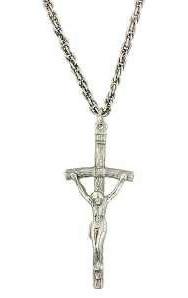
Inspired by the crucifix on the Papal Pastoral Staff, commemorating Pope John Paul II. This silver plated crucifix is approximately 2” tall and the matching chain measures approximately 20”.
RRP $62.95
This gold tone cross is a nice size for either a gentleman’s lapel or a lady’s cardigan. Wearable year round, the cross is delicately etched on each side with a delicate pattern reminiscent of flowing waves. The top of the cross bears the design of a smaller raised cross with etched, tapered points.
RRP $49.95
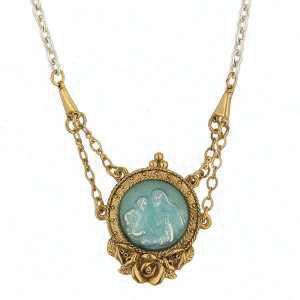
MARY
This exquisite collection is available NOW through The Record Bookshop






A semi-bright silver and gold embossed, fish symbol wrist chain. This symbol represents an early identifying sign for Christians. An ideal gift for First Holy Communion.
RRP $69.95



Necklace with Virgin Mary and Child under blue transparent enamel as intaglio effect with rose accents in gold; the chain is part gold and part silver and measures approximately 16” adjustable and the medallion is approximately 1 1/4”. This beautiful necklace is presented in a classy green gift box bearing the gold Vatican Library Collection logo. RRP $79.95

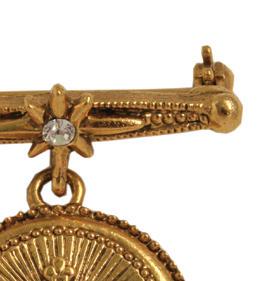



This stunning gold Fob Pin is delicately engraved with rays of light and the holy trinity cross. The top of the pin is inset with a crystal star.
RRP$52.95




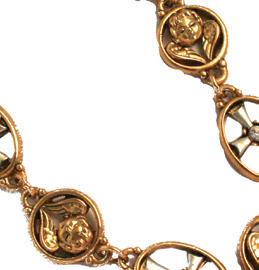



A gorgeous two toned bracelet. There are crystals embedded in the centre of the cross alternating with gold engraved cherubs.
RRP $94.95

This is a gorgeous Statement of Faith Necklace. The pendant is stunning, containing nearly too many elements to list, starting with a highly embellished bail. At the top of the bail a delicate cross rests flanked on either side by the filigree bail. The wire holding the keys can be released allowing the wearer to choose one two, or all three charms. The trio of charms are each unique. The first charm is a simple chain with a multifaceted ruby color accent bead resting above a cross. The centre key is rich with detail starting with a fob that closely resembles a lotus flower and contains a hidden cross design, can you find it? The final, small key is created with a heart shape fob. A lovely and breathtaking piece.

RRP $119.95

ET L’ENFANT BOW BROOCH
A simple rose gold tone medallion is encircled with a antiqued silver tone wreath which is set with light amethyst coloured stones. The entire medallion is hung by a vintage silver tone bow pin.
RRP $64.95







CRYSTAL CROSS GOLD TONE NECKLACE crystal cross necklace is an extremely popular design. The gleaming points of the pendant are created using emerald cut clear crystals. The centre is a lovely gold tone star burst pattern with a twinkling crystal at the center. The necklace chain is created with interspersed, long diamond cut links, and delicate round links.
RRP $74.95